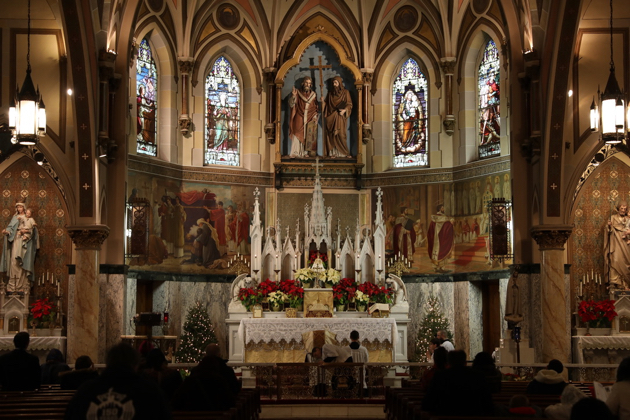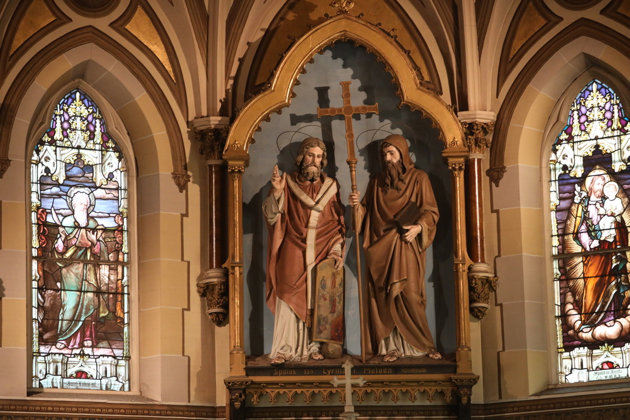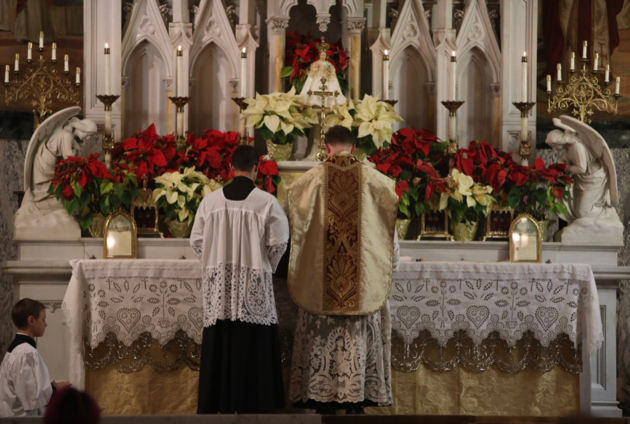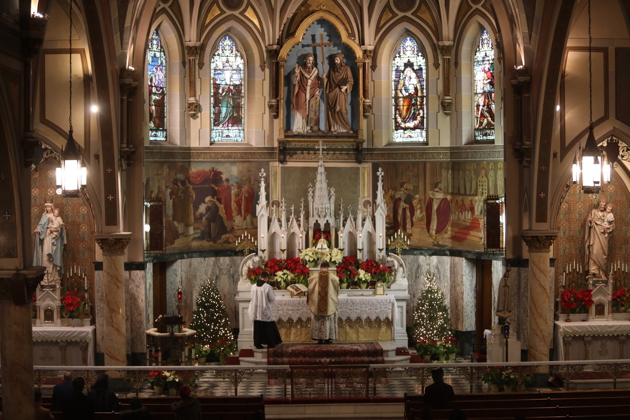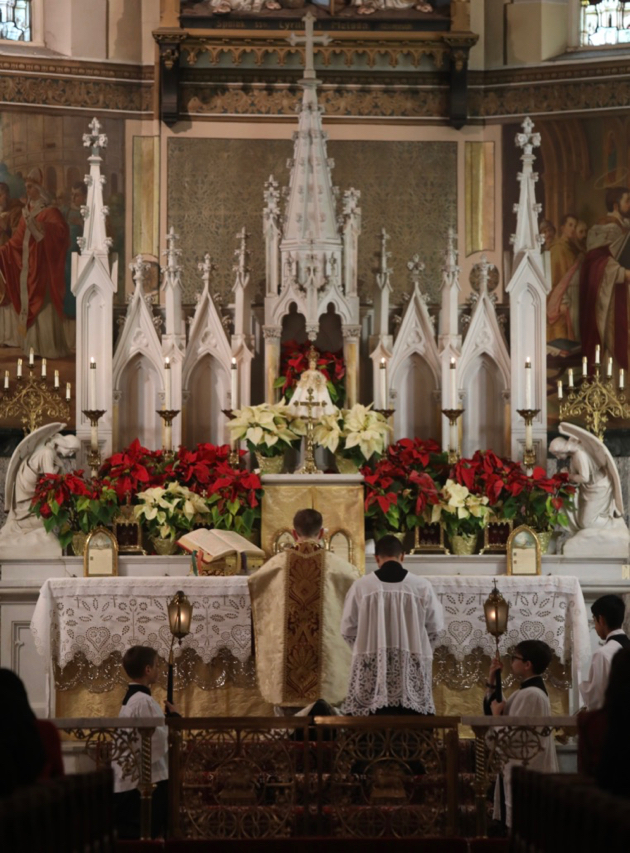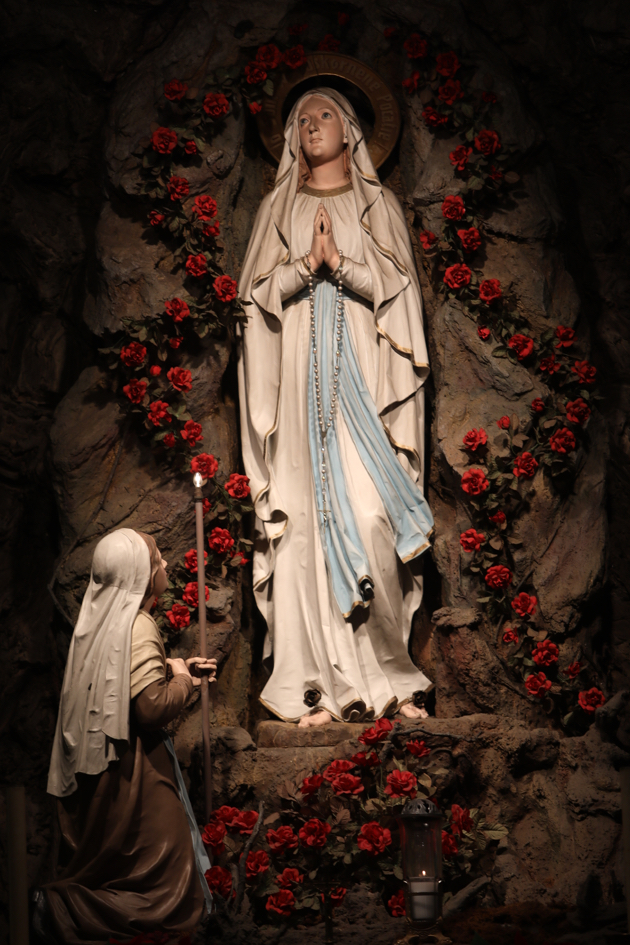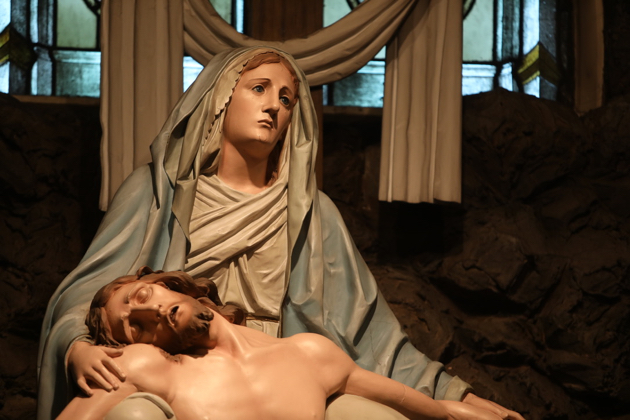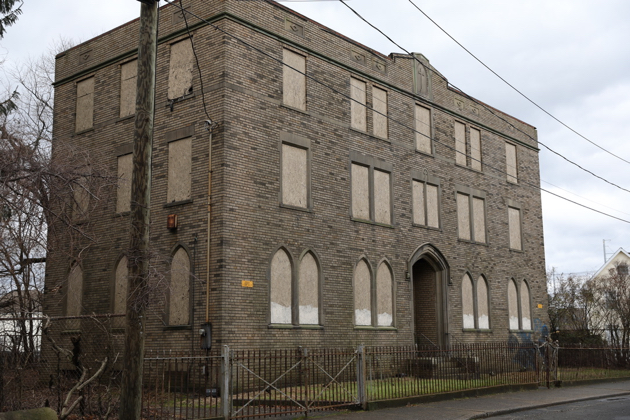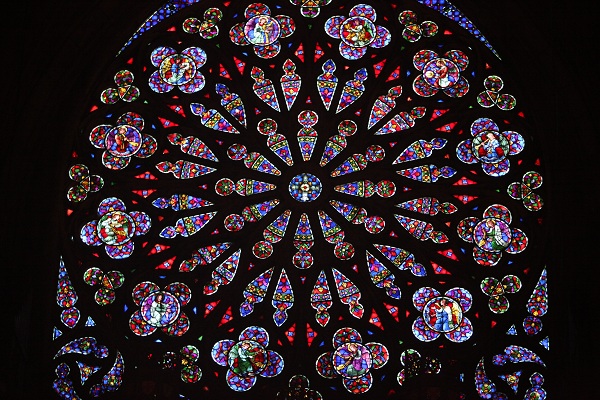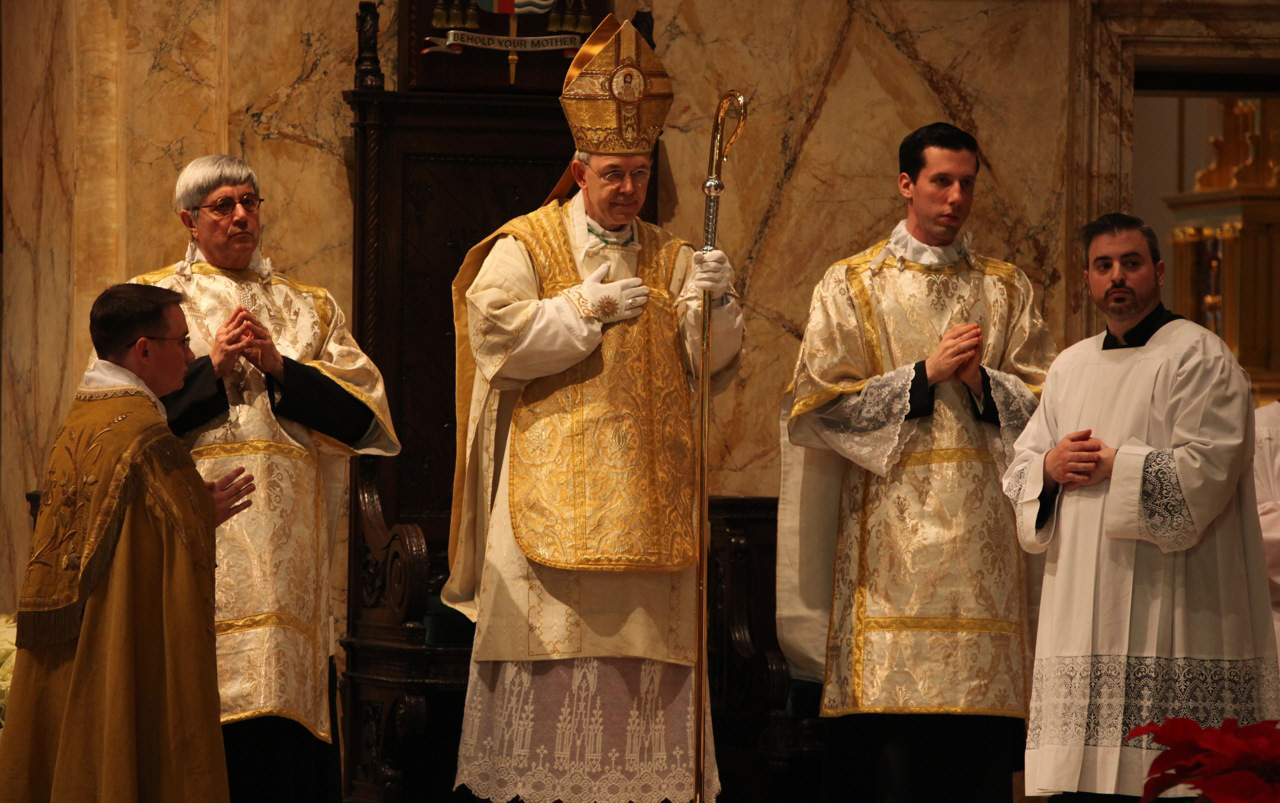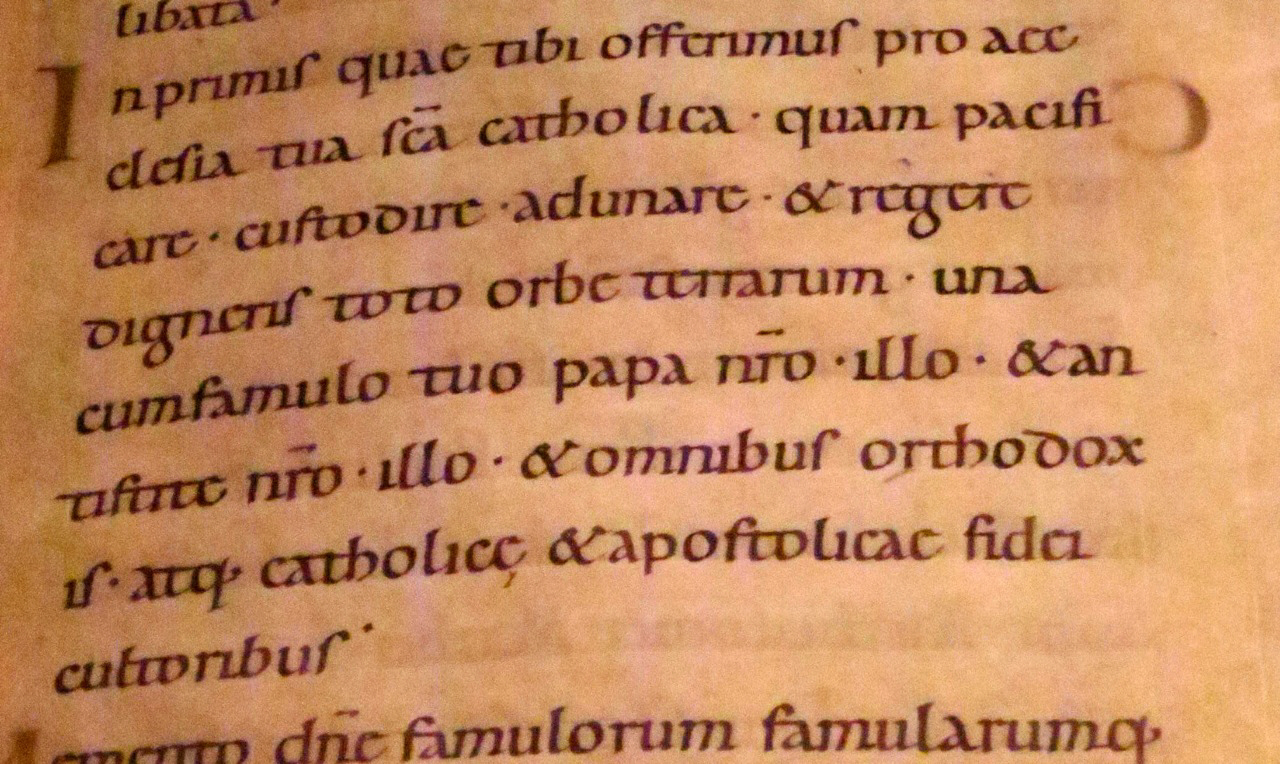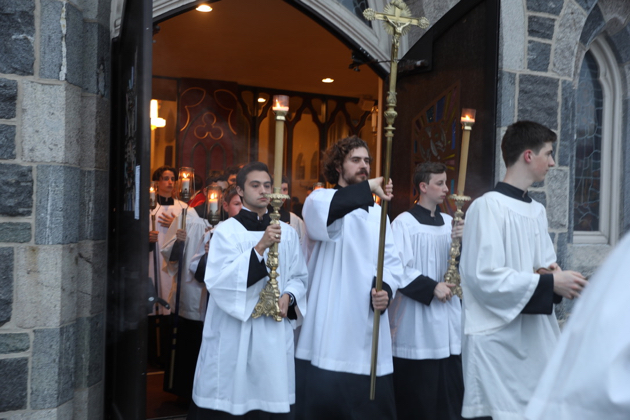
The procession of Cristo Muerte and Our Lady of Sorrows though the streets of Norwalk, Connecticut on Good Friday evening. This year, the procession was sponsored by the Norwalk parishes of St. Mary and St. Joseph.
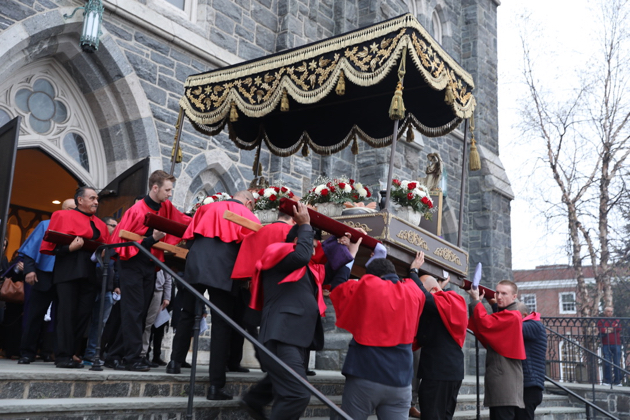
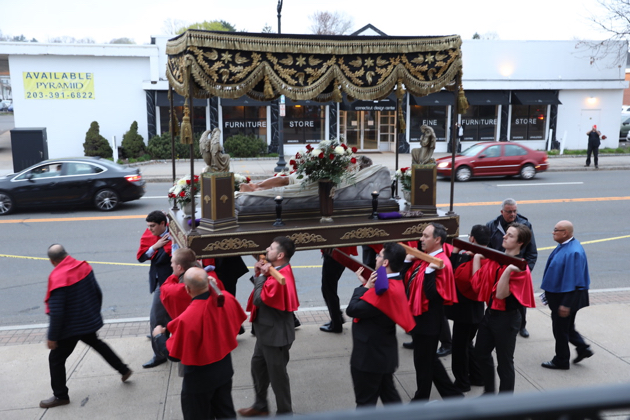
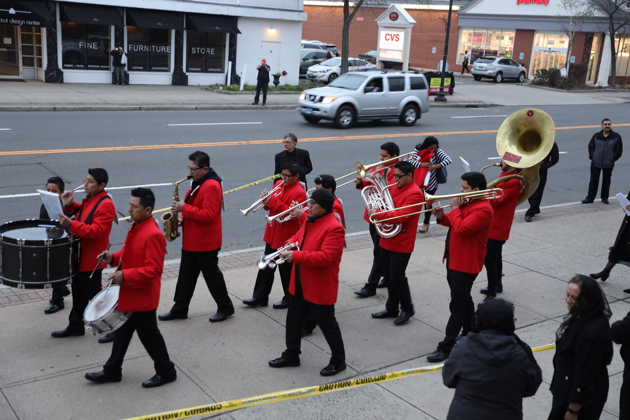
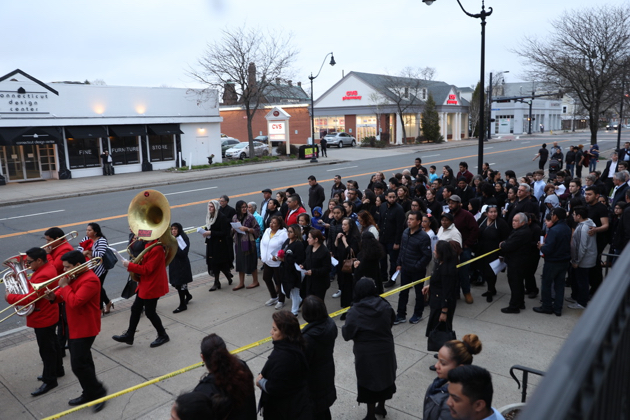
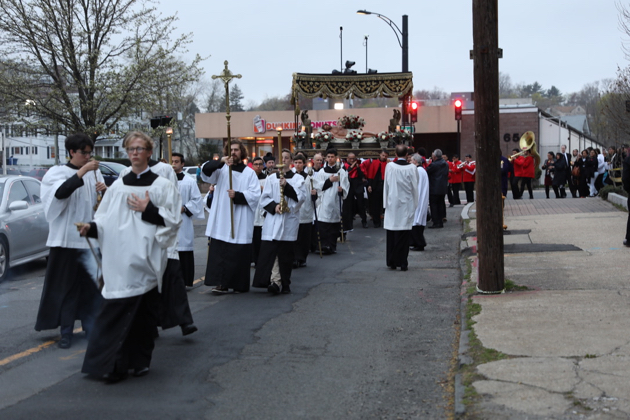
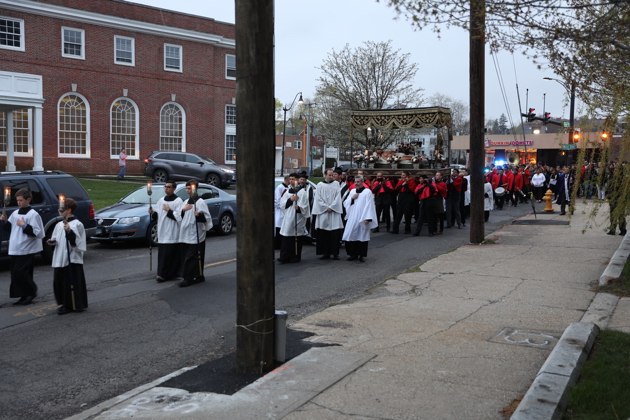
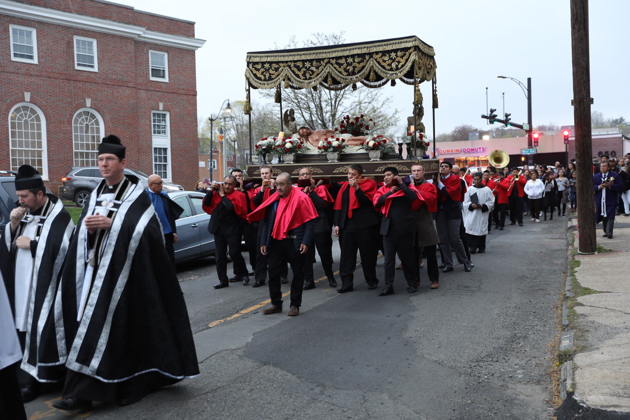
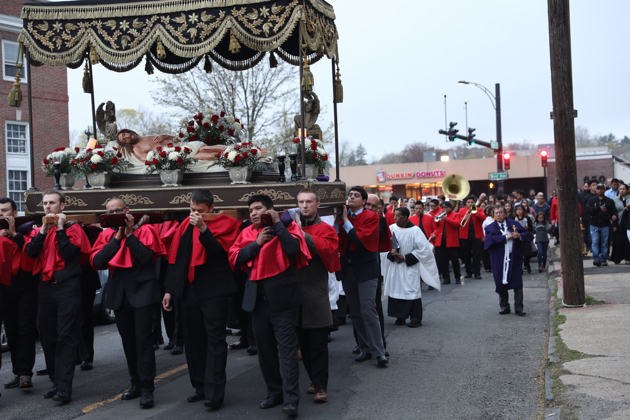
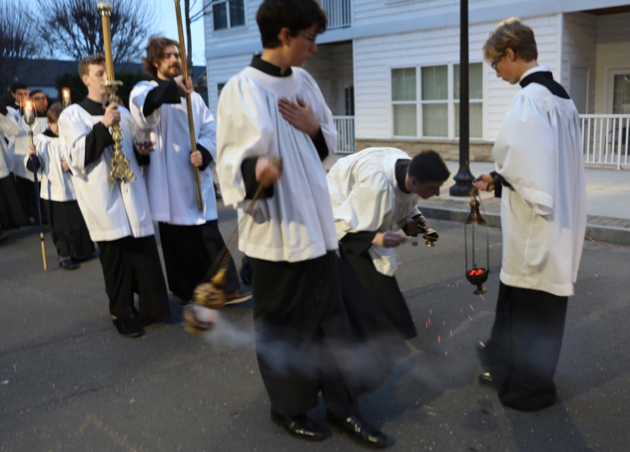
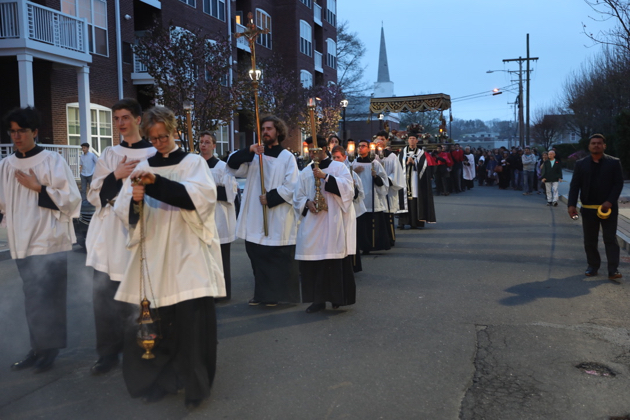
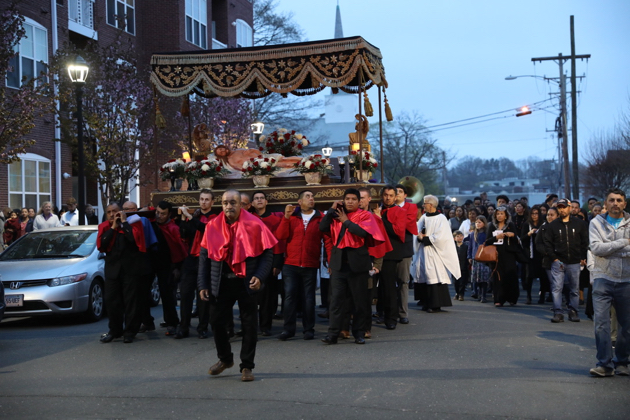
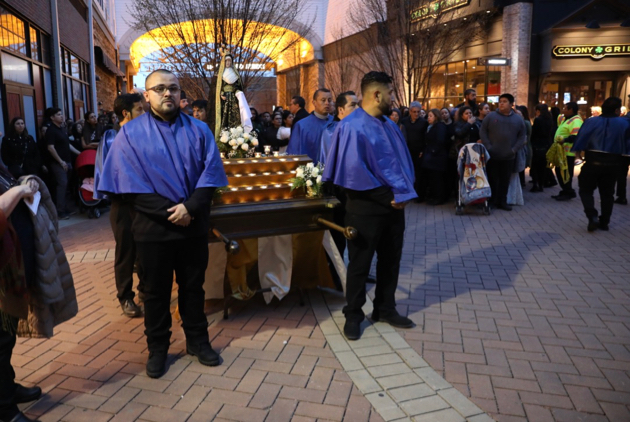
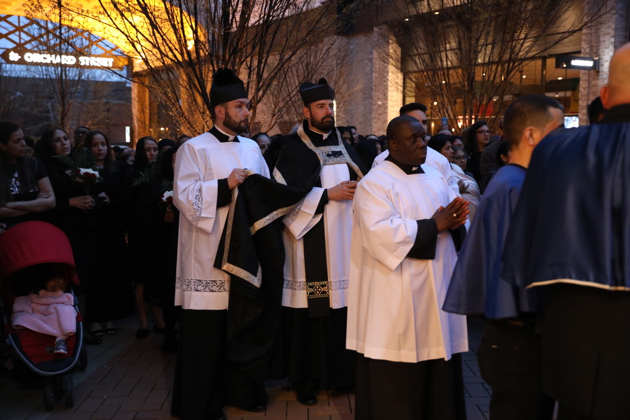
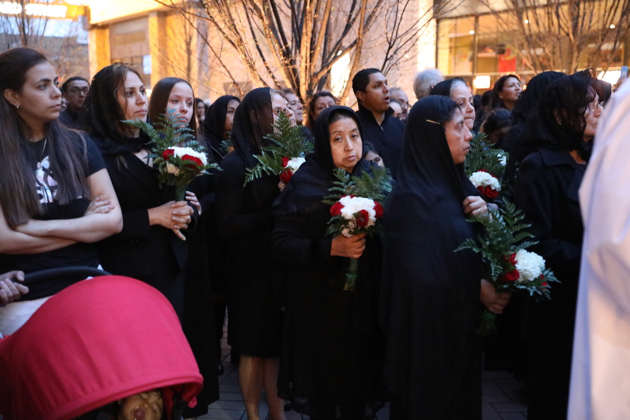
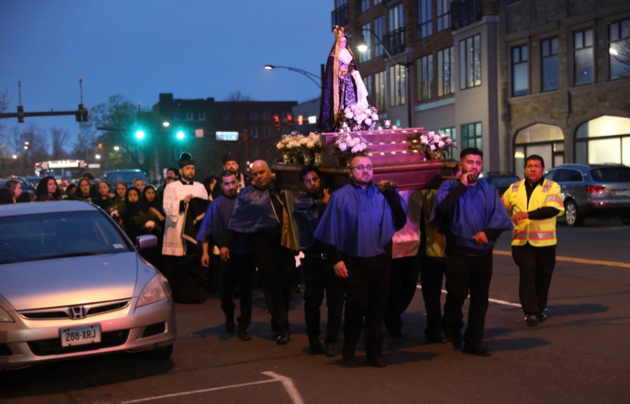
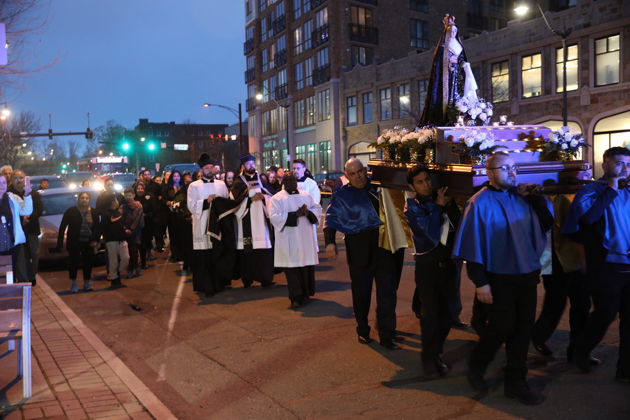
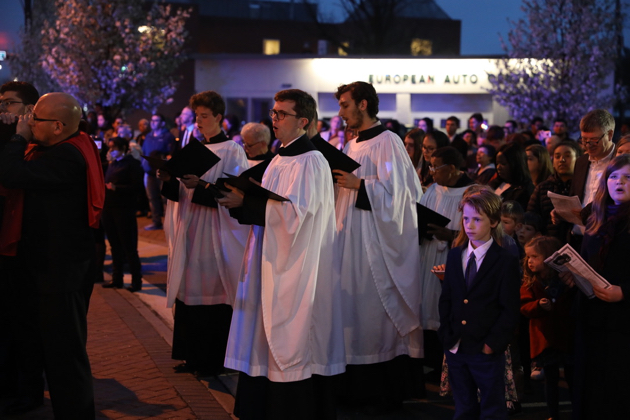

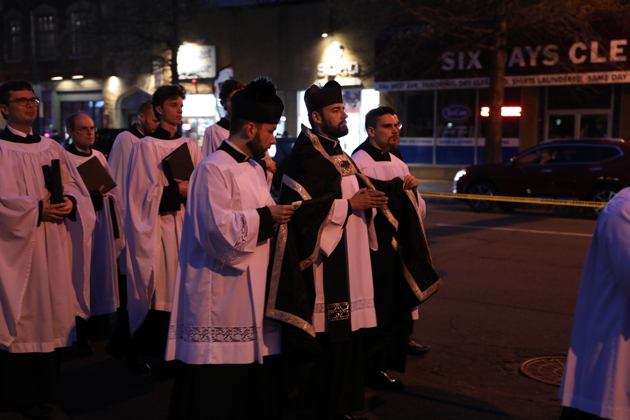

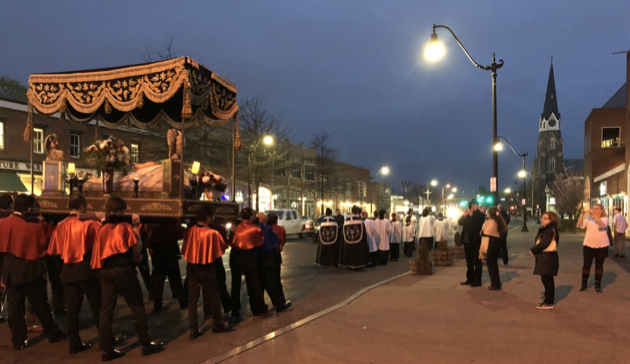
20 Apr
2019

The procession of Cristo Muerte and Our Lady of Sorrows though the streets of Norwalk, Connecticut on Good Friday evening. This year, the procession was sponsored by the Norwalk parishes of St. Mary and St. Joseph.





















20 Apr
2019
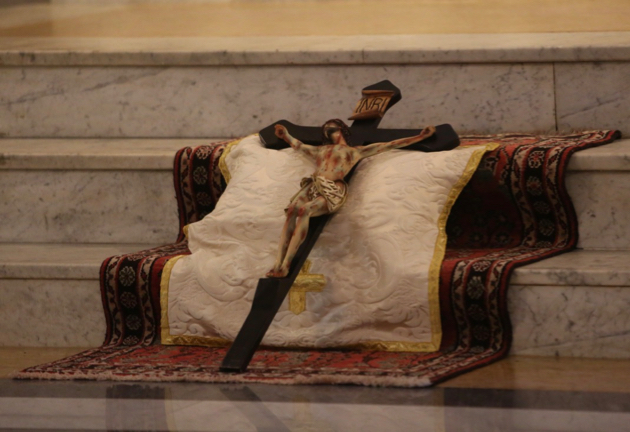
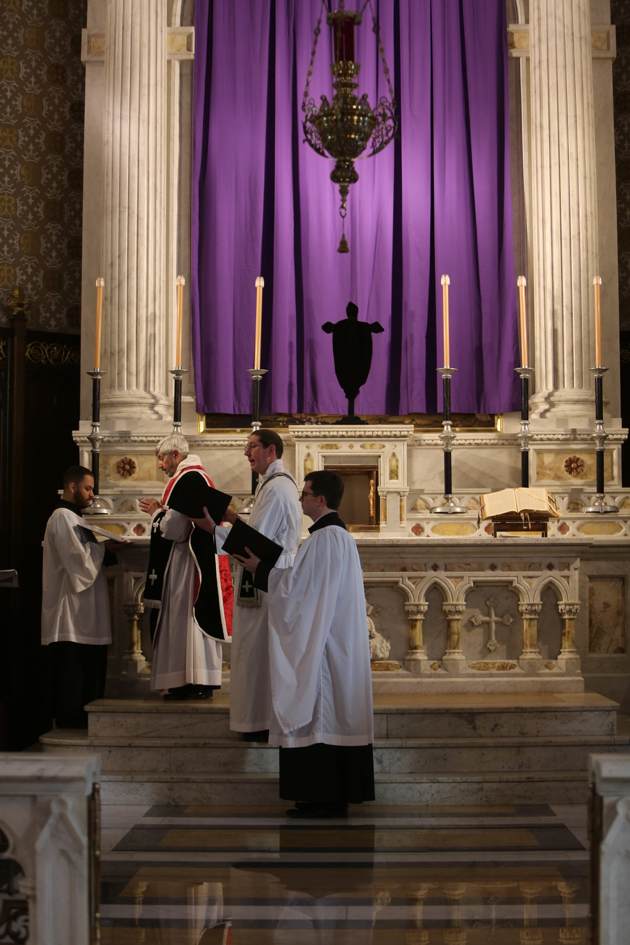
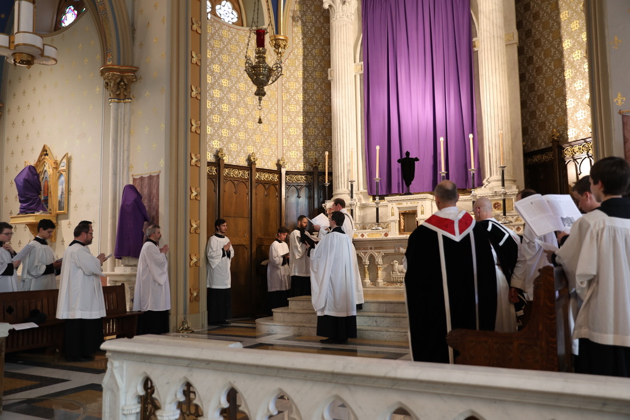

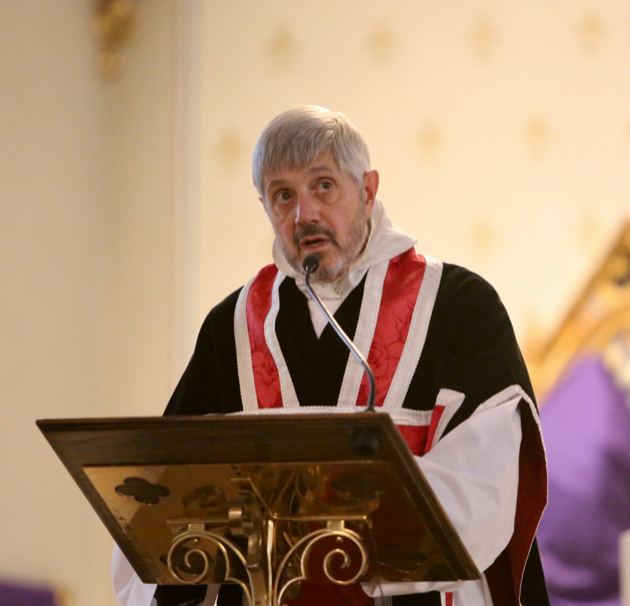
Why is the Sacred Host brought into the church in this solemn procession on this Good Friday? In order for the priest, on the one day that the Sacrifice of the Mass is not celebrated, to hold the Host on high for all to see on this day, to behold the Sacrament of the One who exploded the black hole of sin and death, the God who loved us so much that he gave his only begotten Son to die for us, and it is the priest, the one who offers sacrifice, who then consumes the Sacred Host not to offer the Sacrifice as he usually does at the Mass, but to show us what the absence of the Sacramental presence of Christ would mean, the void without hope. And with this gesture the priest shows us what this is all about, the will of God to become flesh and die a real death for you and me. He died a real human death, yes, without sin, but real, a death died not in some sort of smug way knowing the outcome, smug because of his Godhead, but rather like you and me, he died in faith that his Father would allow him to smash the terrible power of death and bring him once again to his bosom. He died really for you and me so that the reality of what he died for, the forgiveness of our sins, may become a reality in our space and time, for you and for me.
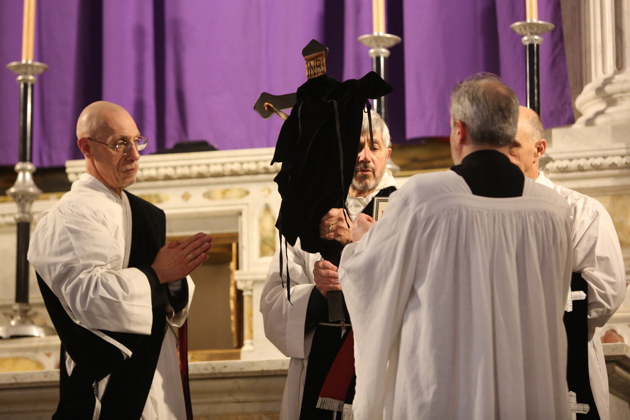
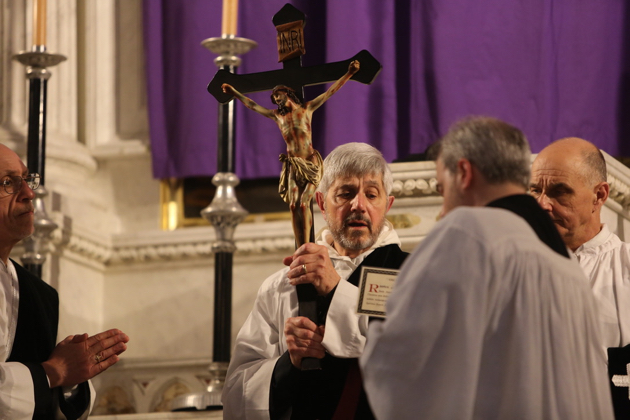
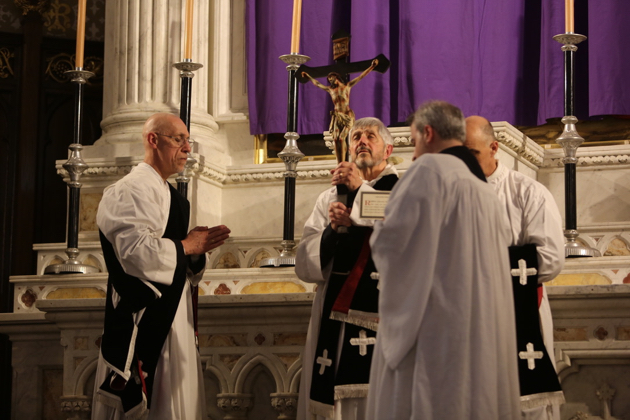
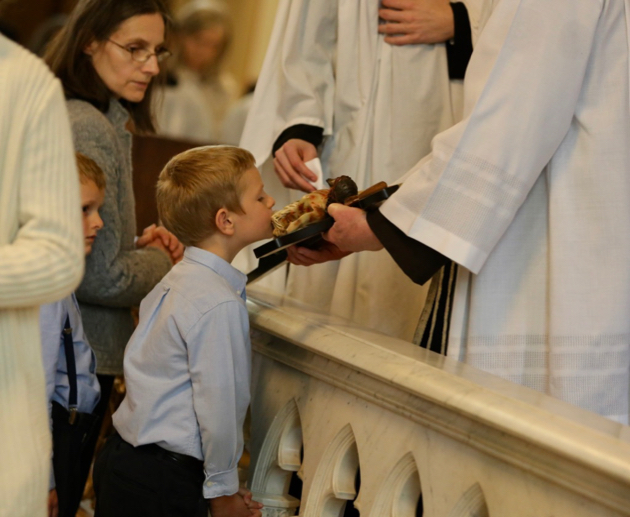
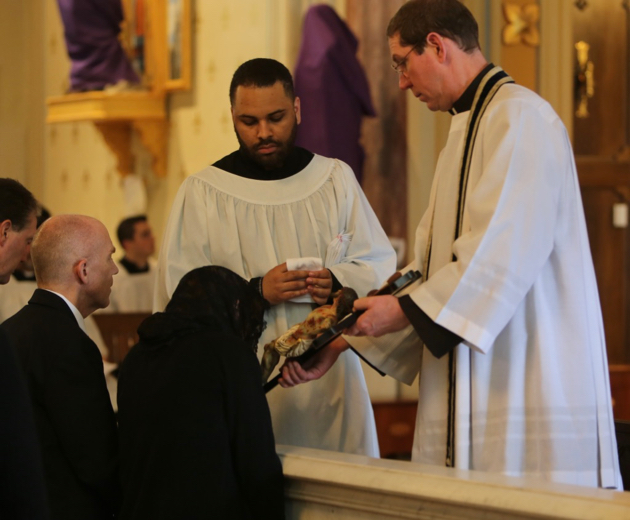


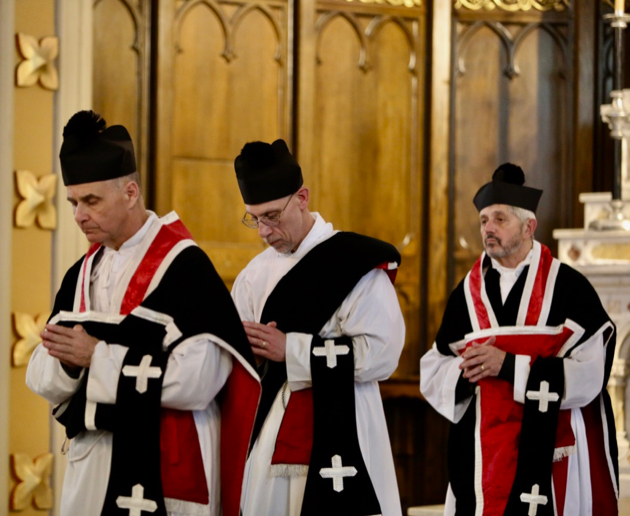
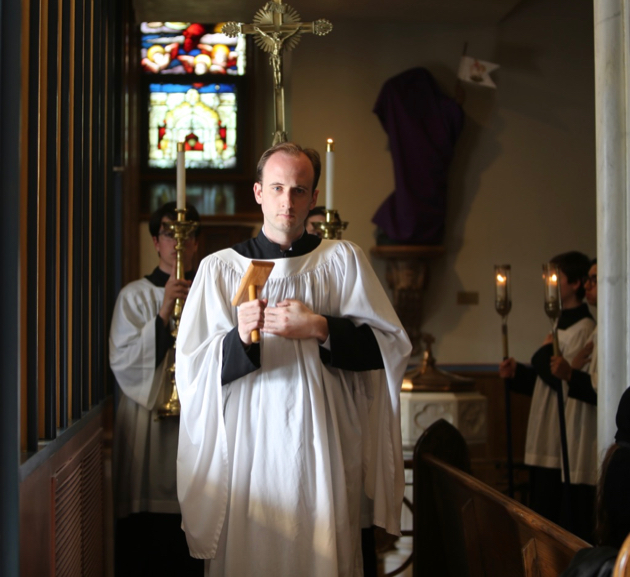
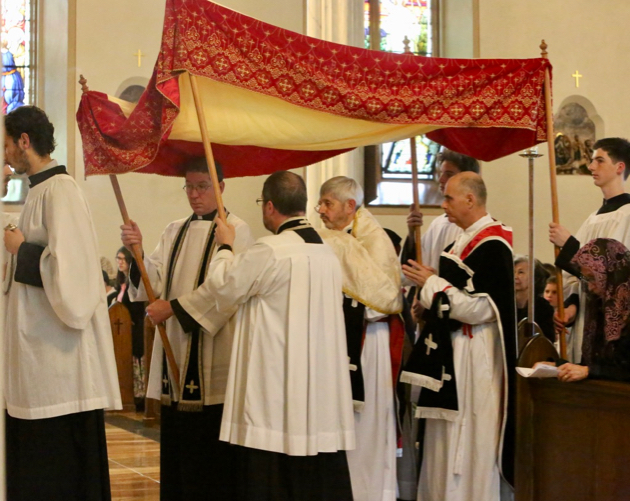
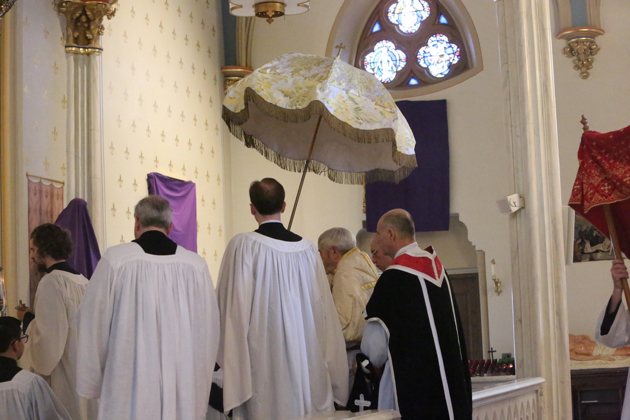

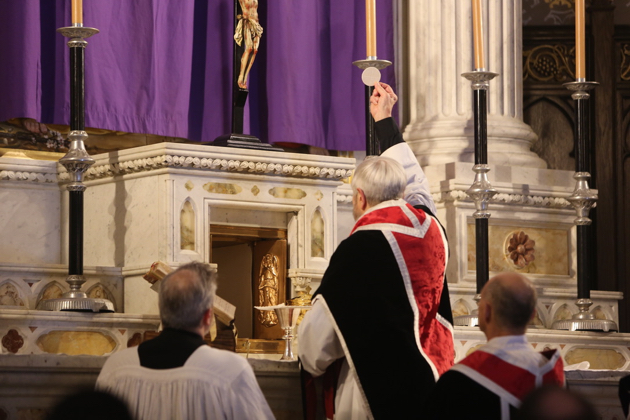
18 Apr
2019
Yesterday evening, the Office of Tenebrae for Maundy Thursday was chanted at St. Mary’s Church, Norwalk, CT. The Viri Galilaei, augemented by many priests and seminarians, chanted in choir, while the St. Mary’s Schola Cantorum sang polyphonic settings in the choir loft.
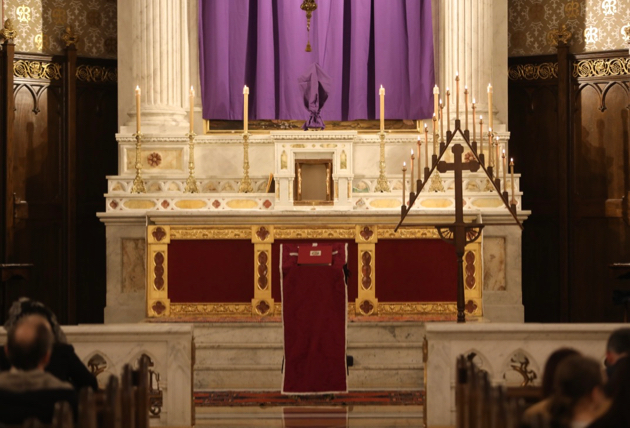
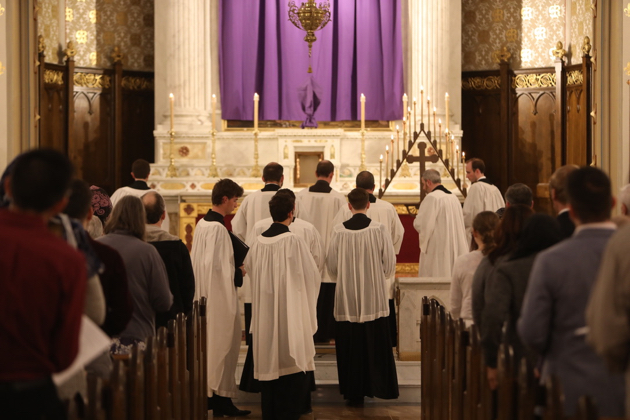
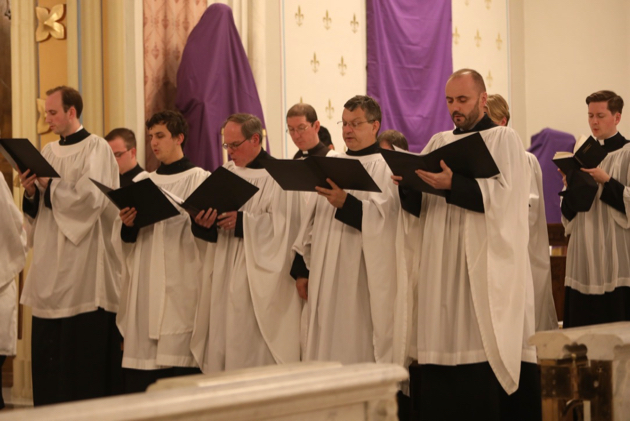
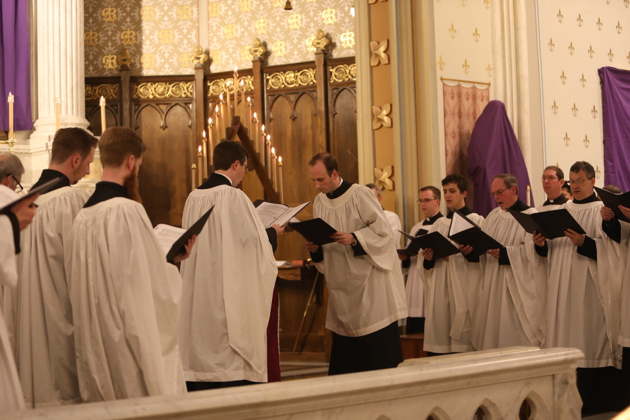
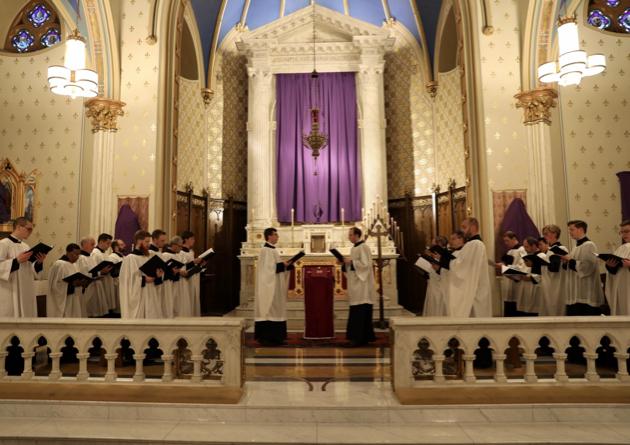

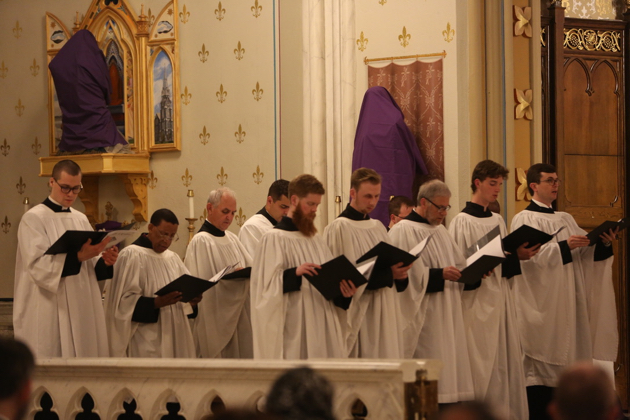

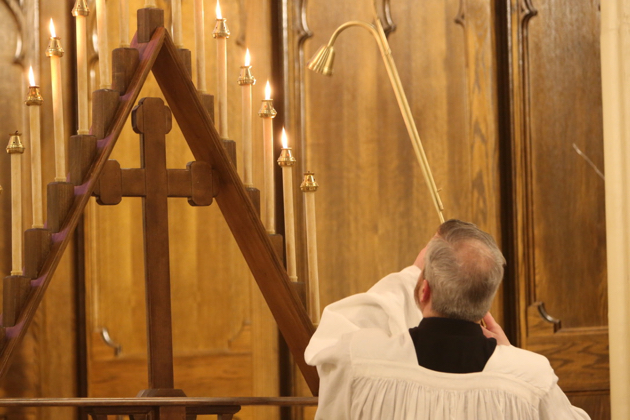
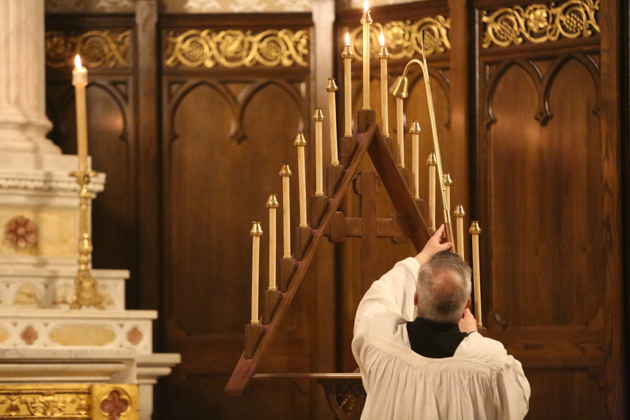
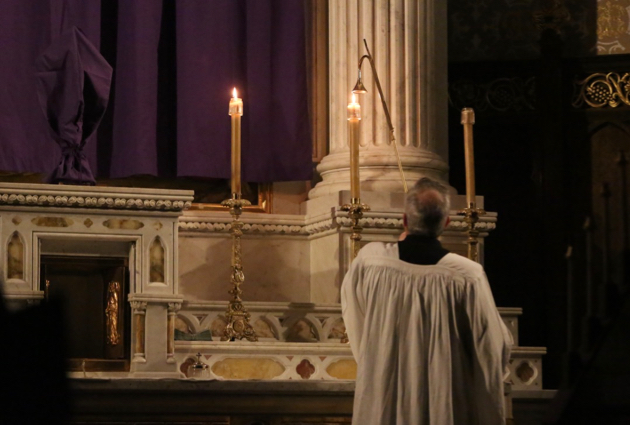
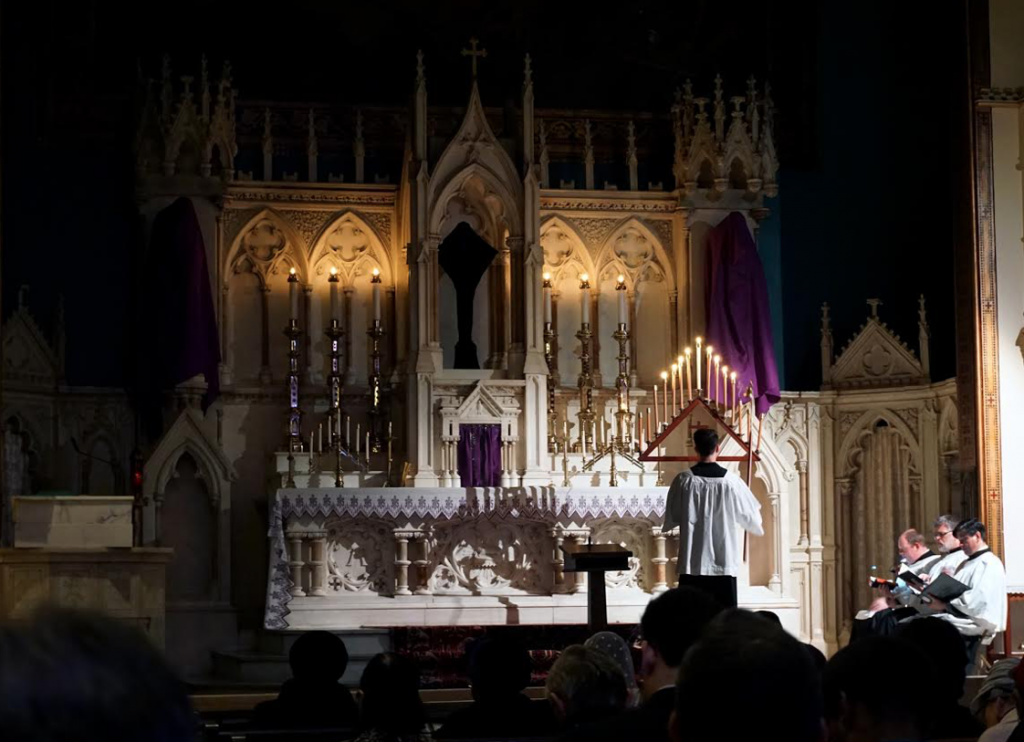
14 Apr
2019
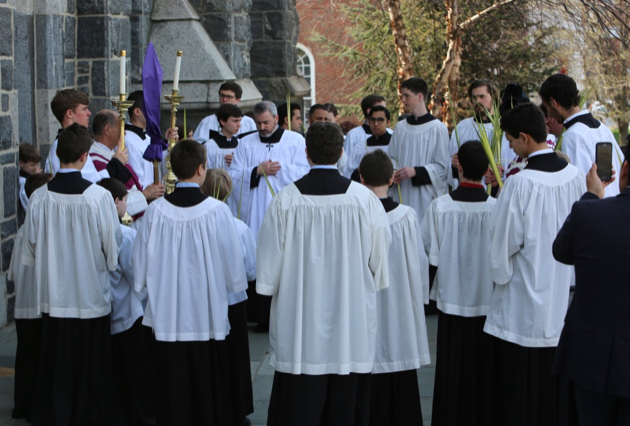
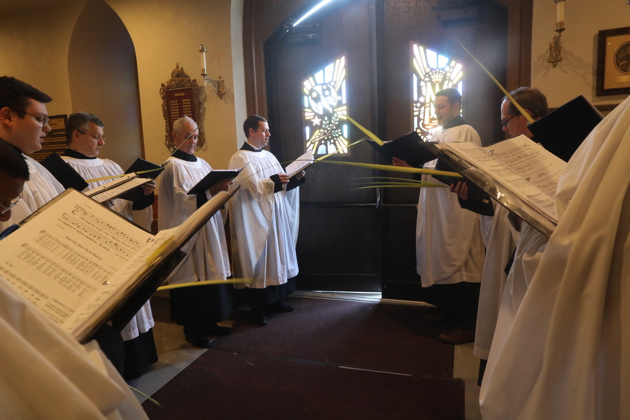
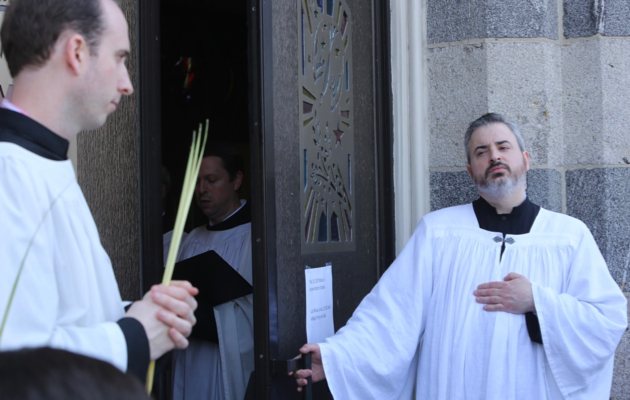
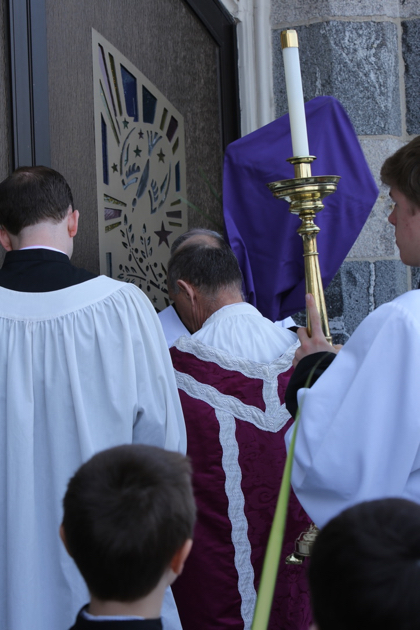

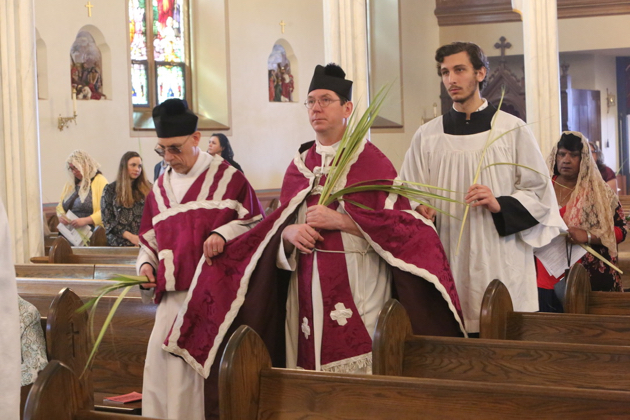
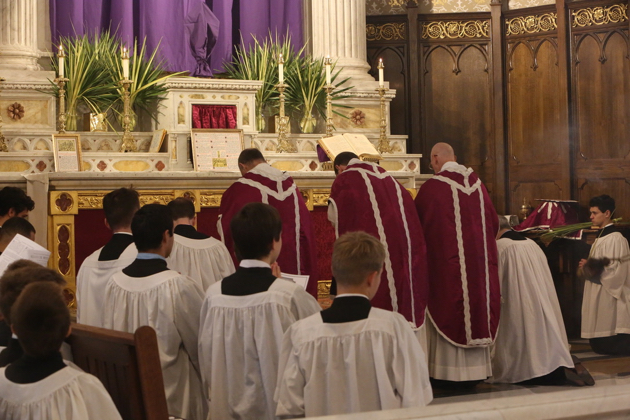

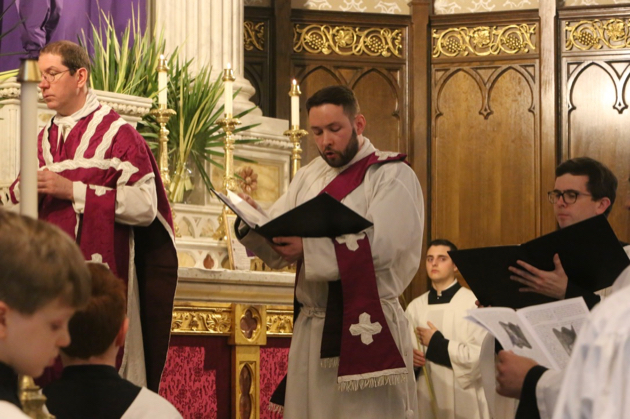
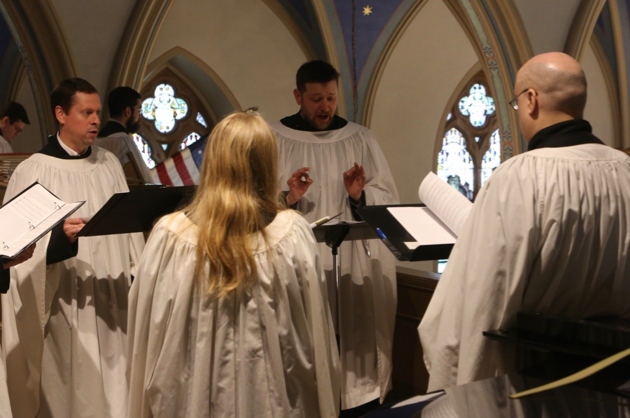
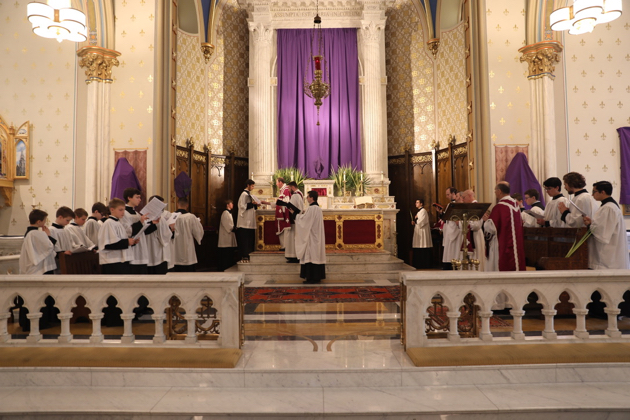
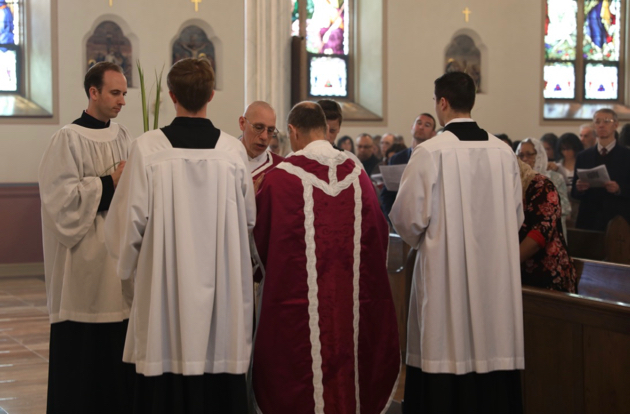

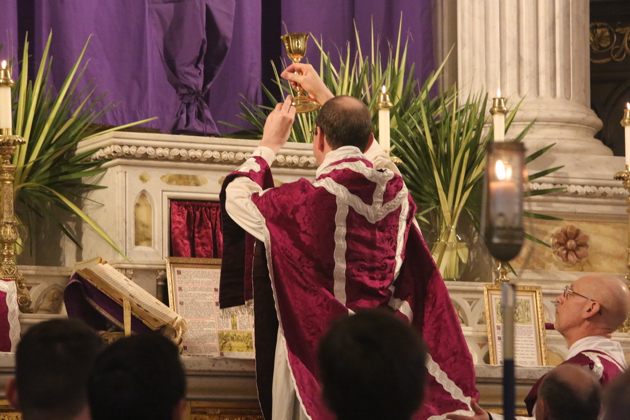
14 Apr
2019
Mass of the Palms and the Procession
The full rite for the blessing of palms takes the form of a “Missa Sicca” (dry Mass) and follows the schema of the Mass, save that the blessing of palms replaces the consecration fo the Eucharist.
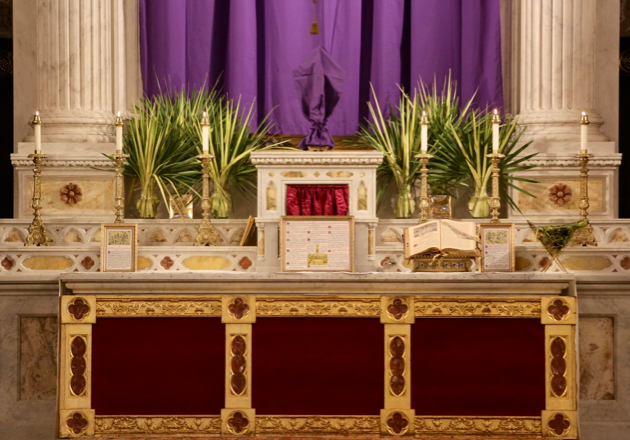
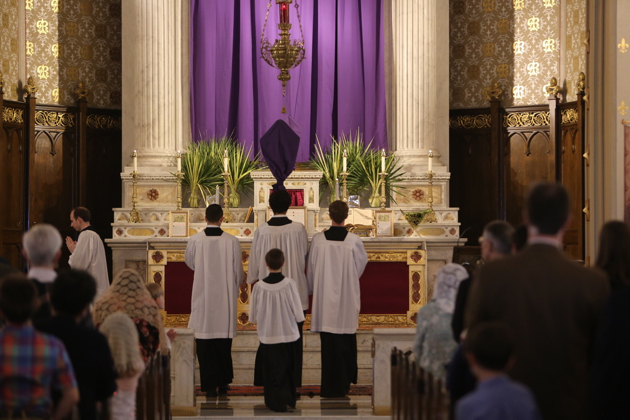
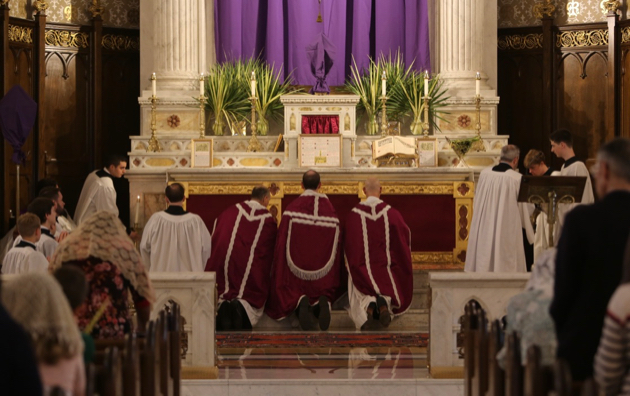
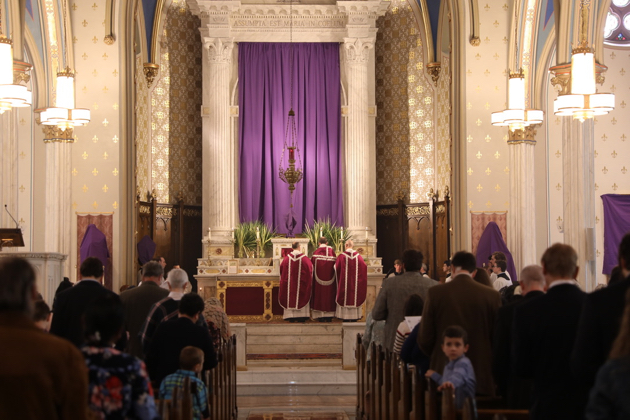
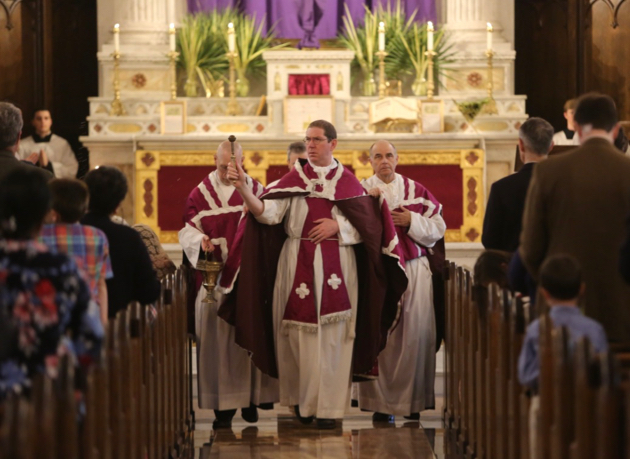
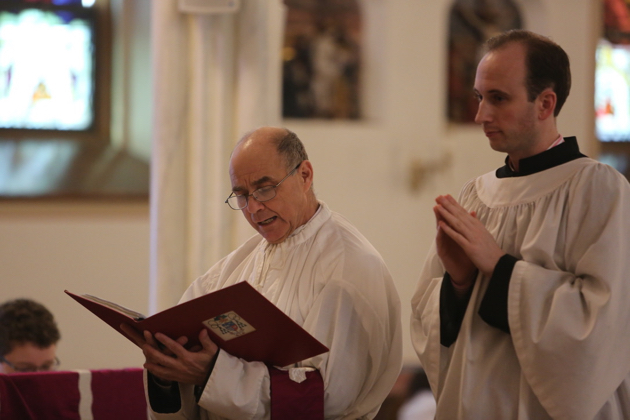
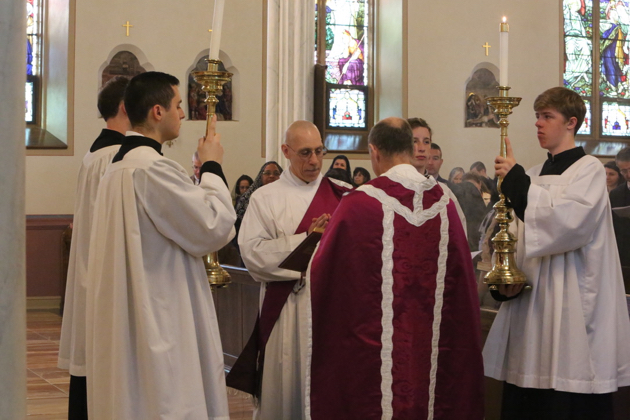
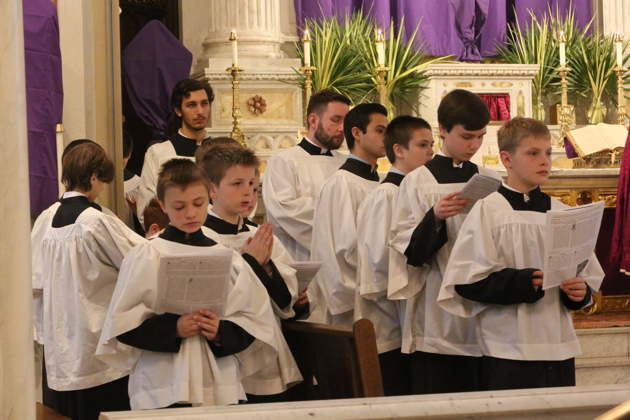

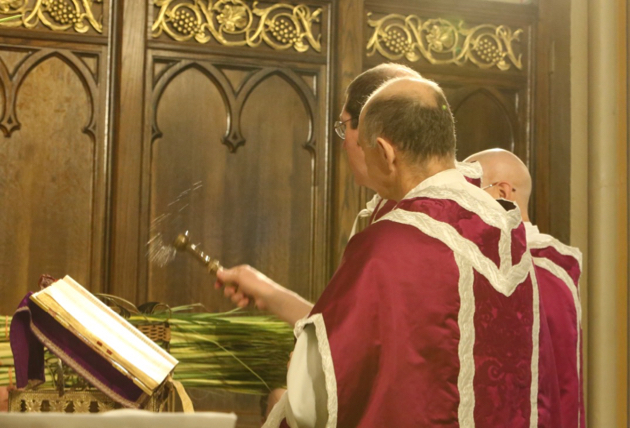
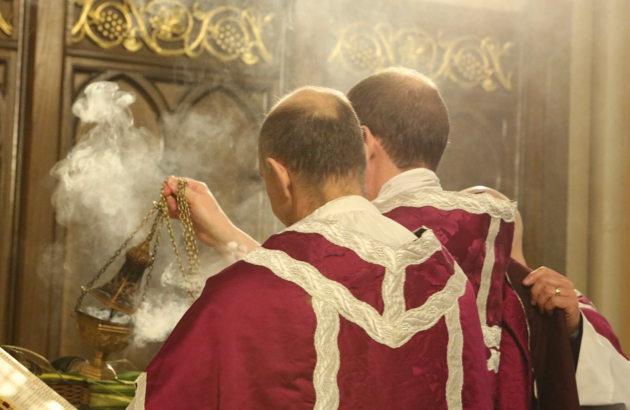

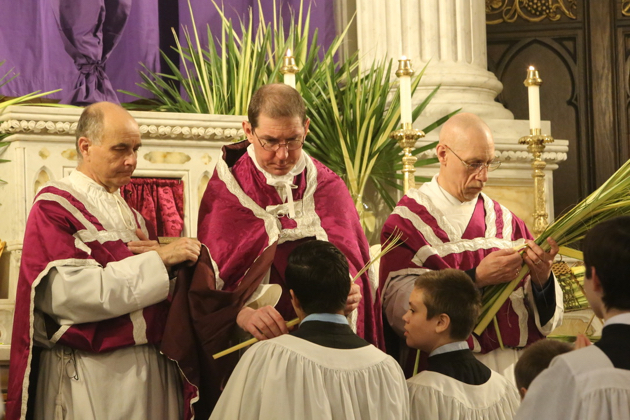
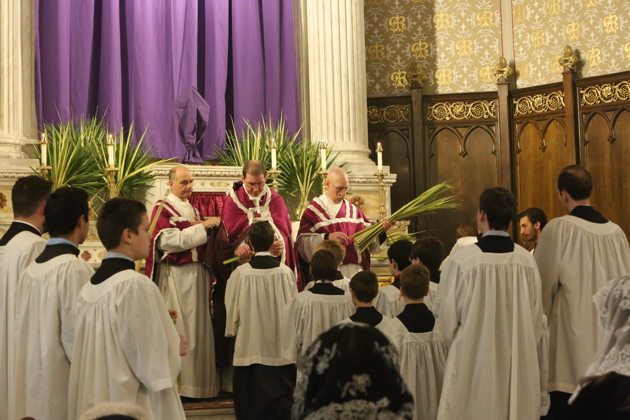
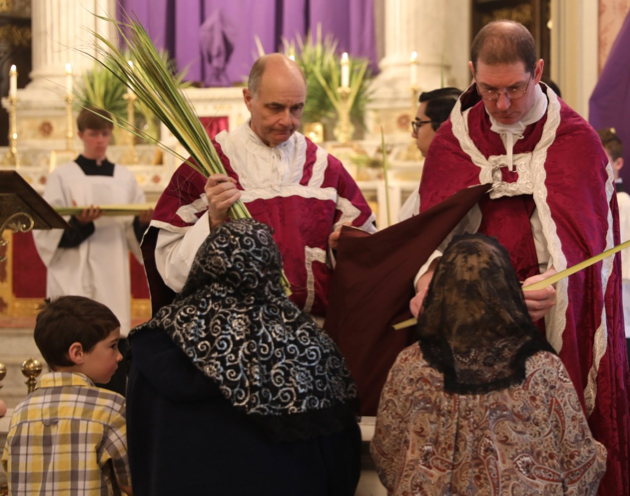
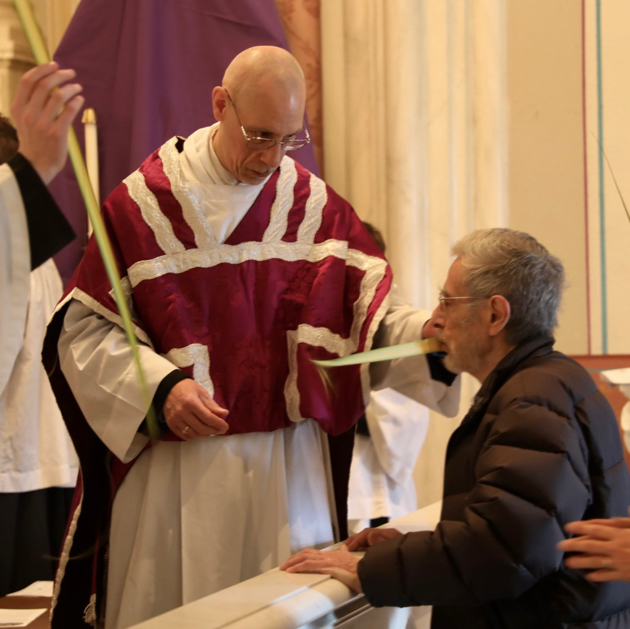
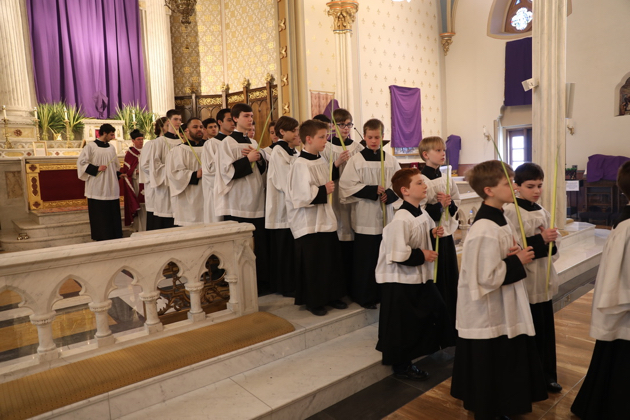
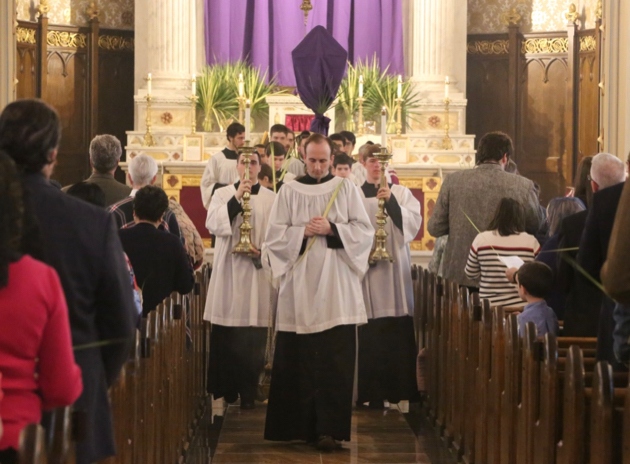
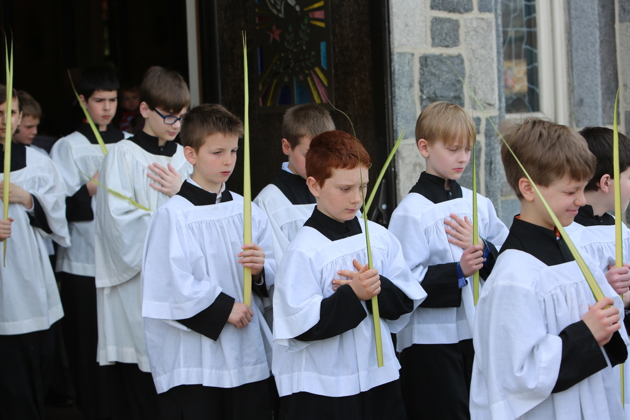
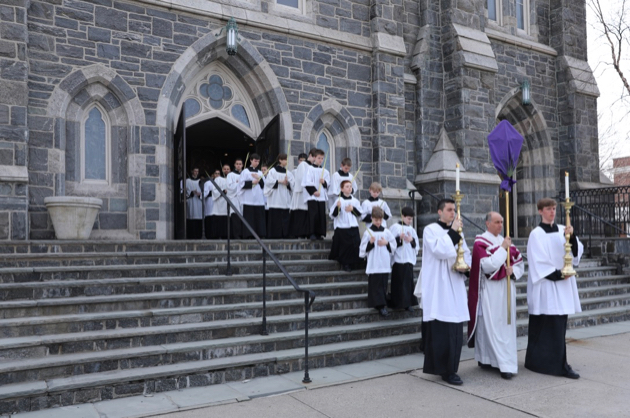
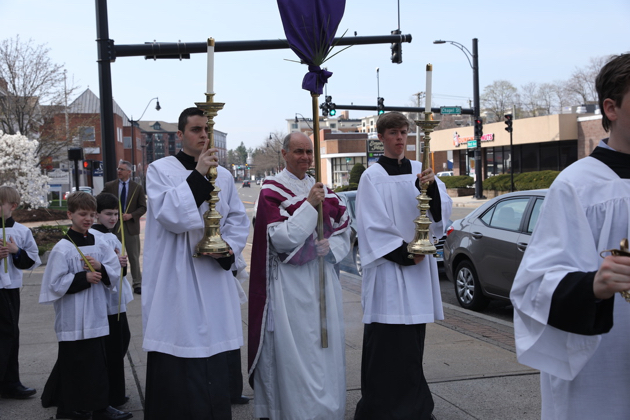
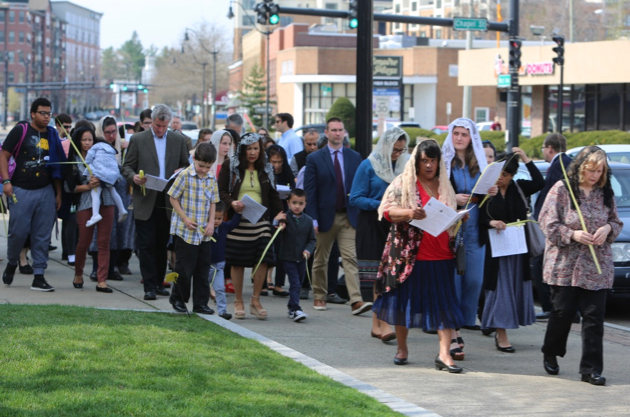
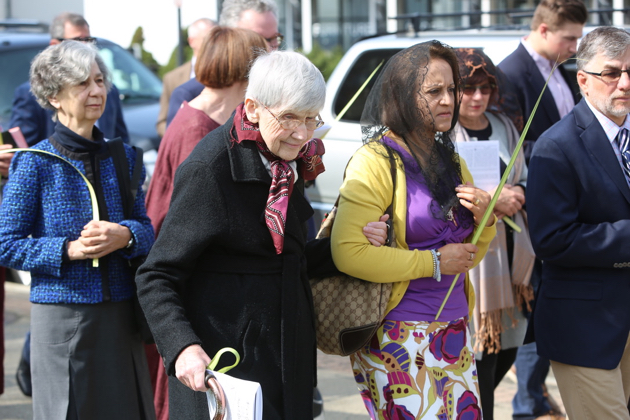

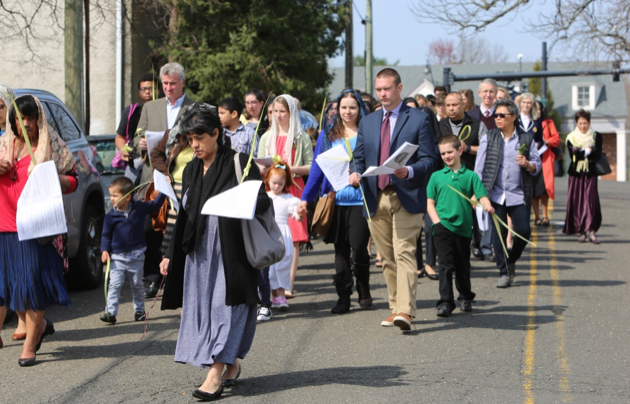
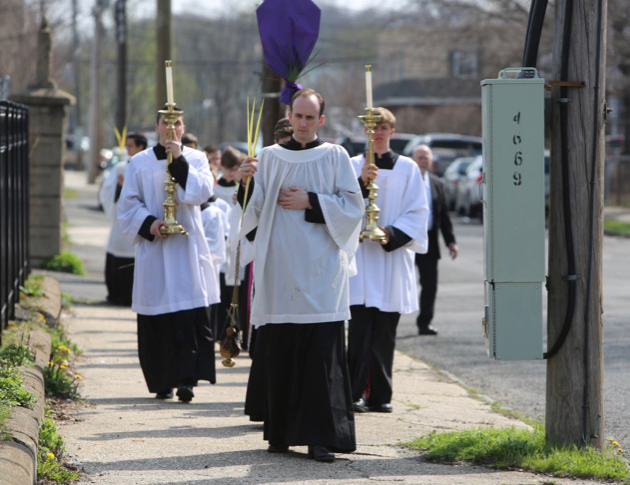
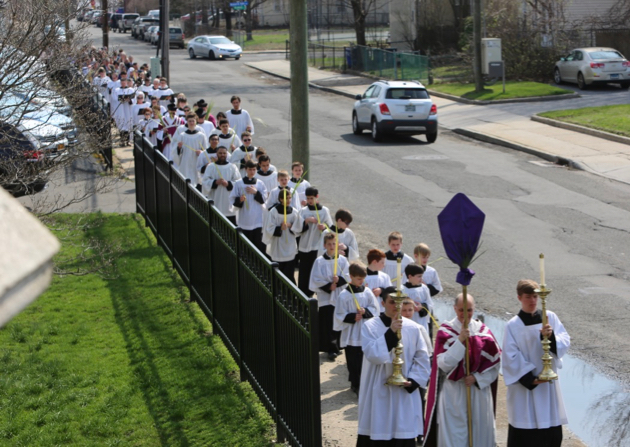
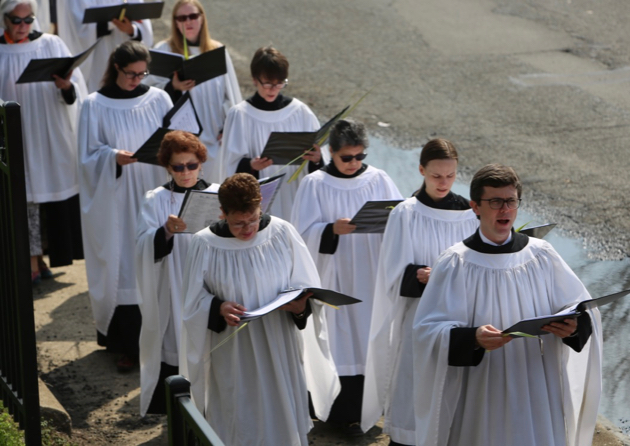
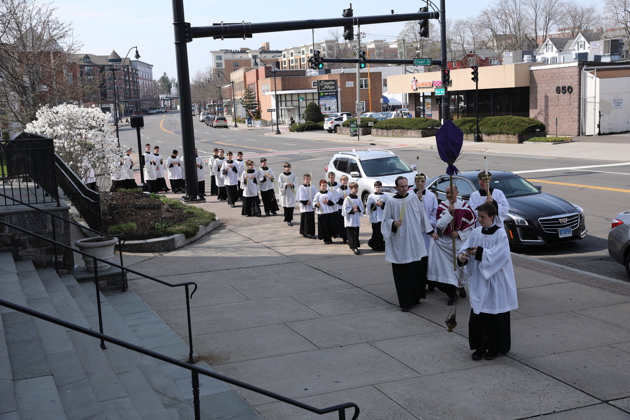
13 Apr
2019
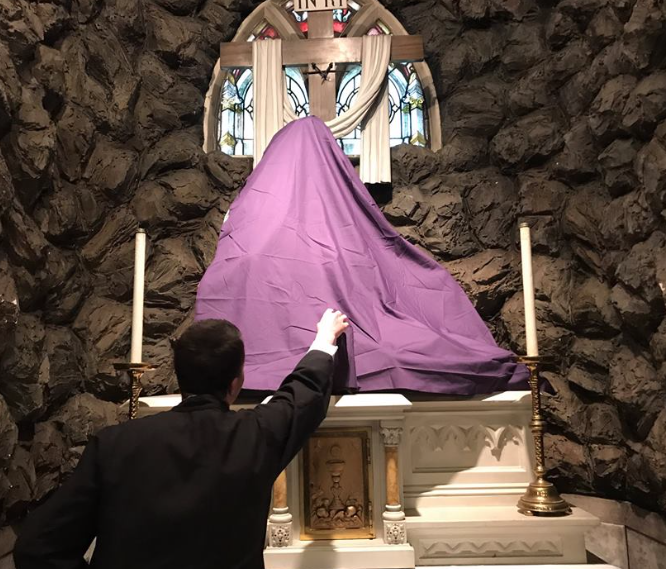
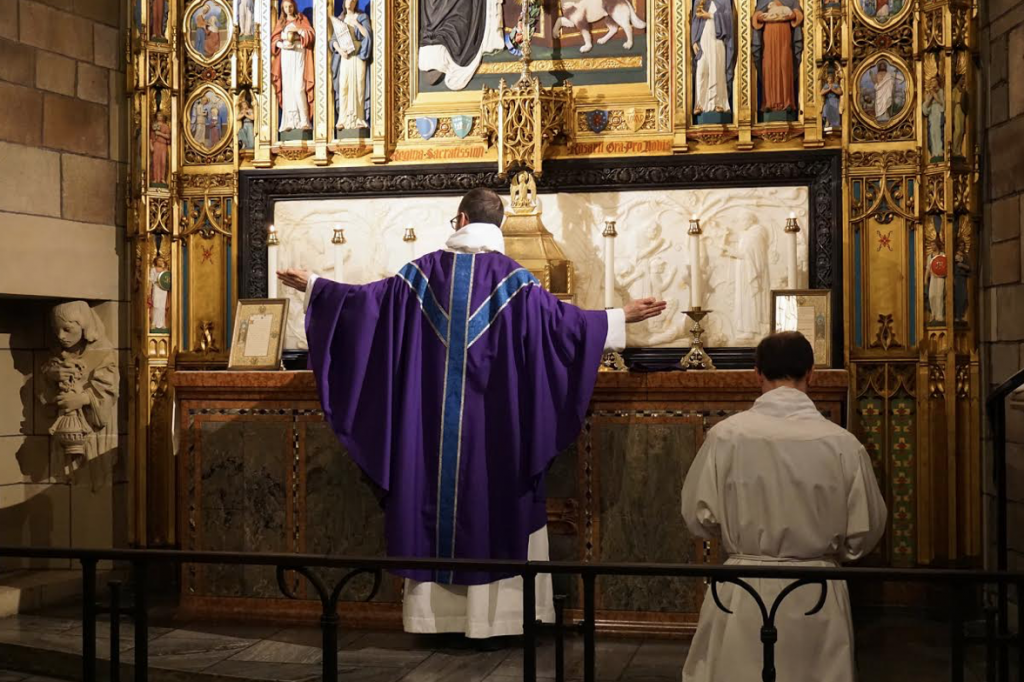
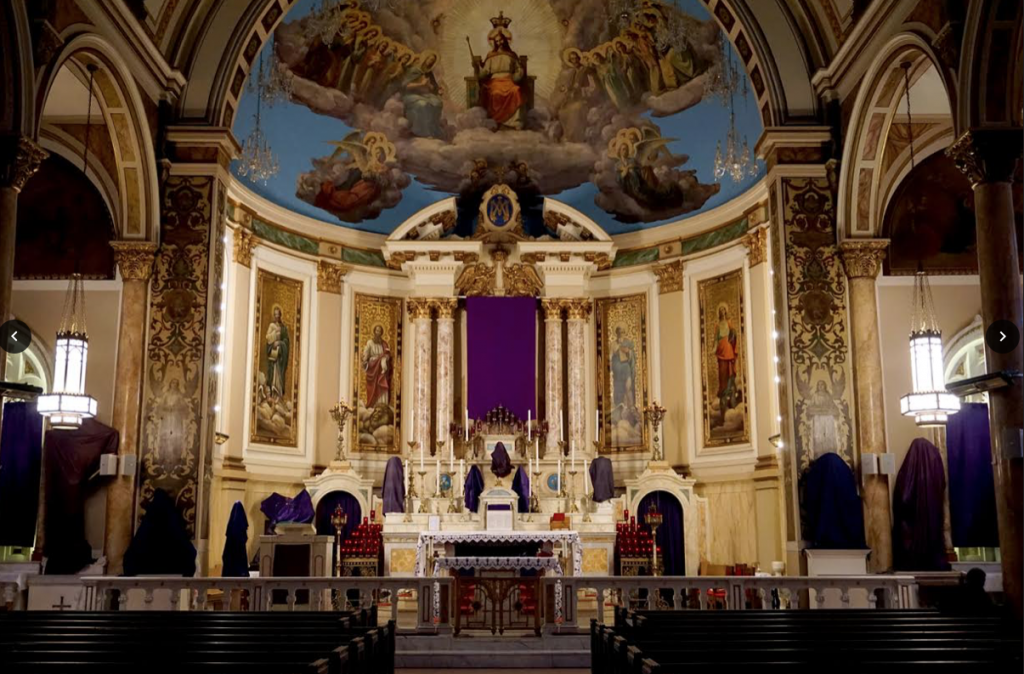
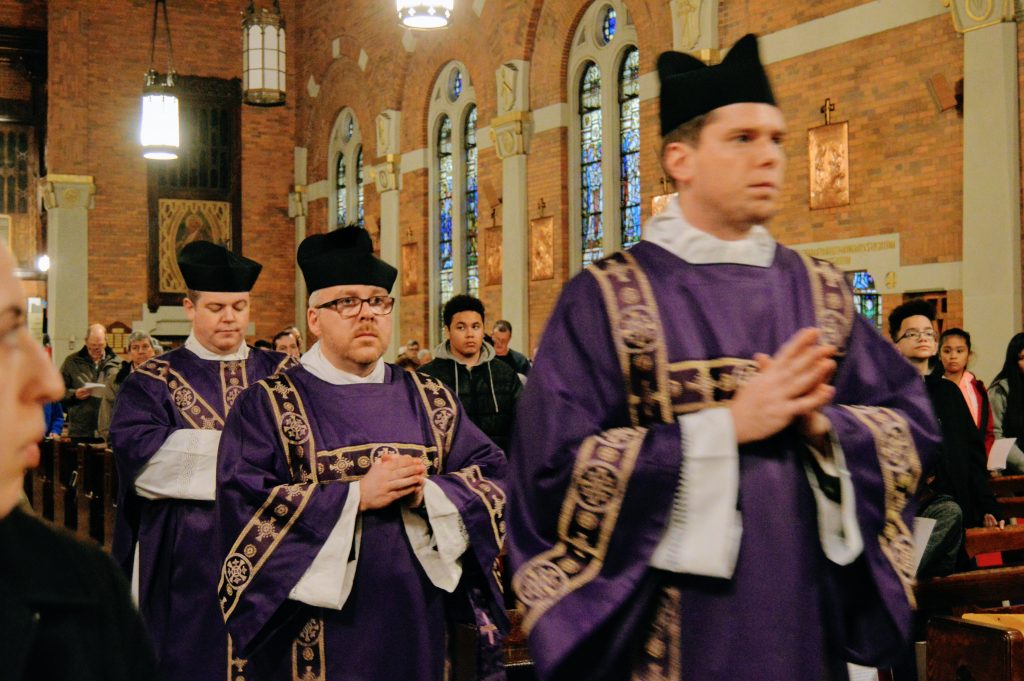
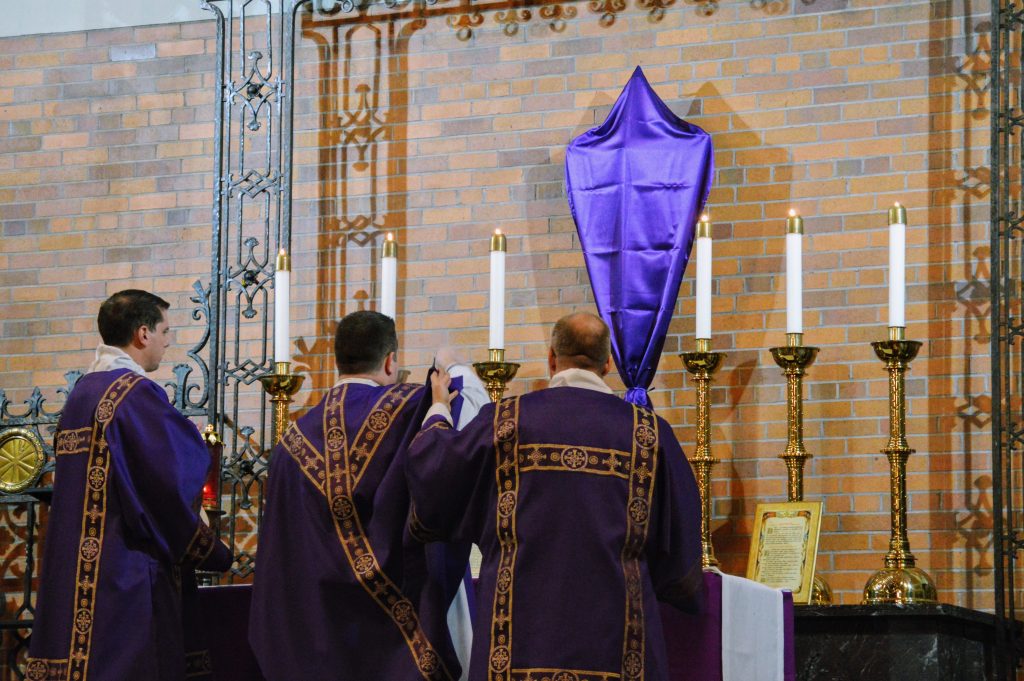
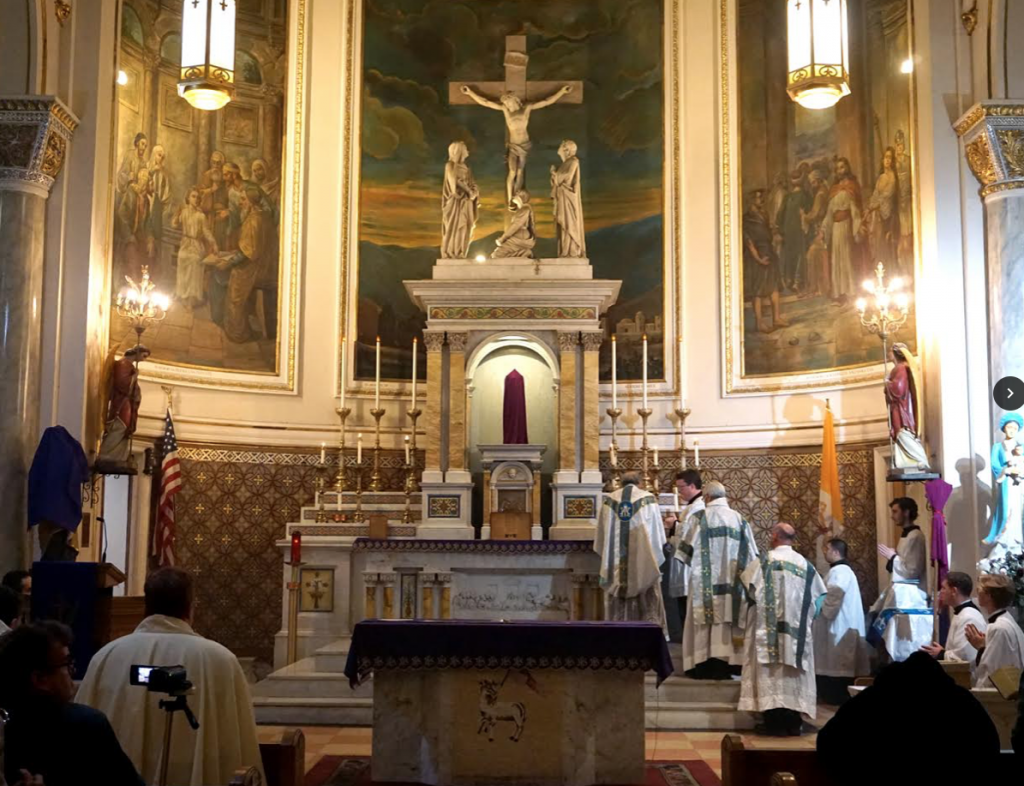
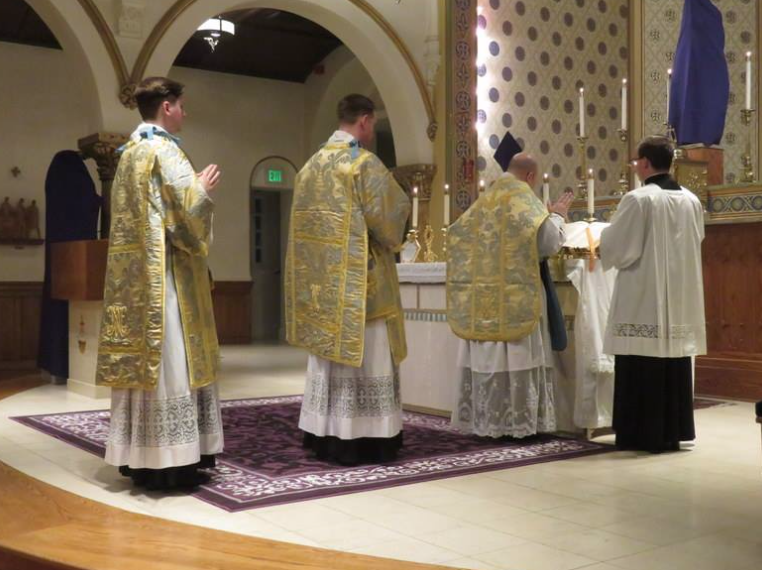
7 Apr
2019
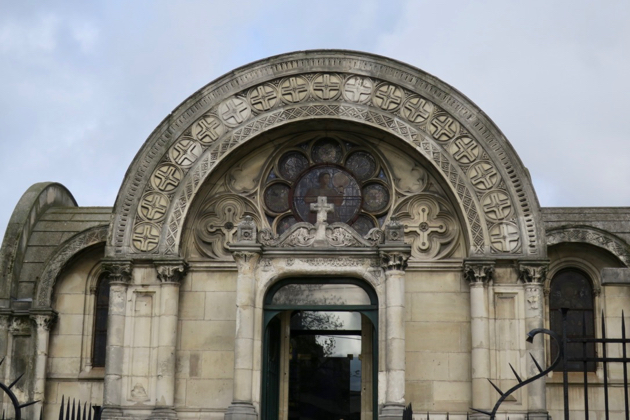
Paris is one of the grand cities of late Western civilization – entirely taken up with business, shopping, eating, beauty care, tourism, etc. But as a sombre counterpoint to all this relentless activity are the funerary monuments of the 19th century. Now located in very commercial districts but entirely off the touristic beaten path, they commemorate the victims of the disasters, crimes and misfortunes of the past. Like the tall clock in the last black velvet room in The Masque of the Red Death, they serve as a stark memento mori to the revelers outside, lost in the frenzy of modernity. They also bear witness to the once strong Catholic faith of France – even amid the secularizing society of the 19th century. A fortunate “break in the action” on a recent business trip gave me the opportunity to revisit these memorials.
Not too far from the Gare Saint-Lazare is the Chapelle Expiatoire, the oldest and largest of the chapels we will consider. It commemorates the spot where the bodies of Marie Antoinette and Louis XVI were found after the restoration of the monarchy in 1815. After their execution by the Revolutionary government, their bodies had been unceremoniously deposited in the cemetery of the Madeleine which soon received so many more victims as the terror progressed. The chapel was erected by Louis XVIII, the first king of the restoration and finished in 1826 by his successor, Charles X. Like the other chapels we will visit, the Chapelle Expiatoire is a cenotaph – King Louis XVI and Marie Antoinette were reburied in the basilica of Saint Denis.
Once located in a romantic park, the chapel is now surrounded by 19th century commercial buildings. An entrance pavilion leads to an open walkway flanked by unmarked graves on either side – commemorating the Swiss guards of the king massacred in 1792. They now stand eternal watch before what had been the resting place of their king. The domed chapel itself is a severe yet brightly lit neoclassical space. The decoration of the ceilings and floor is simple and elegant: that is also true of the sanctuary which unfortunately is no longer in regular use. In the side apses are statues of King Louis XVI and Marie Antoinette consoled by Faith and an angel.

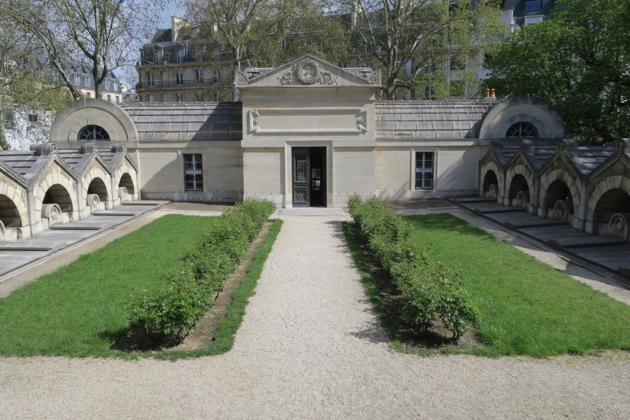
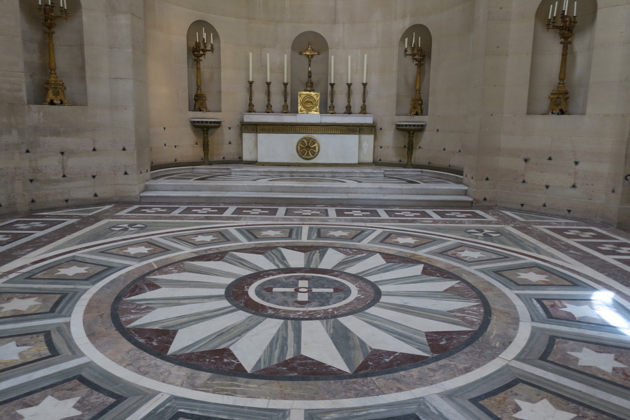
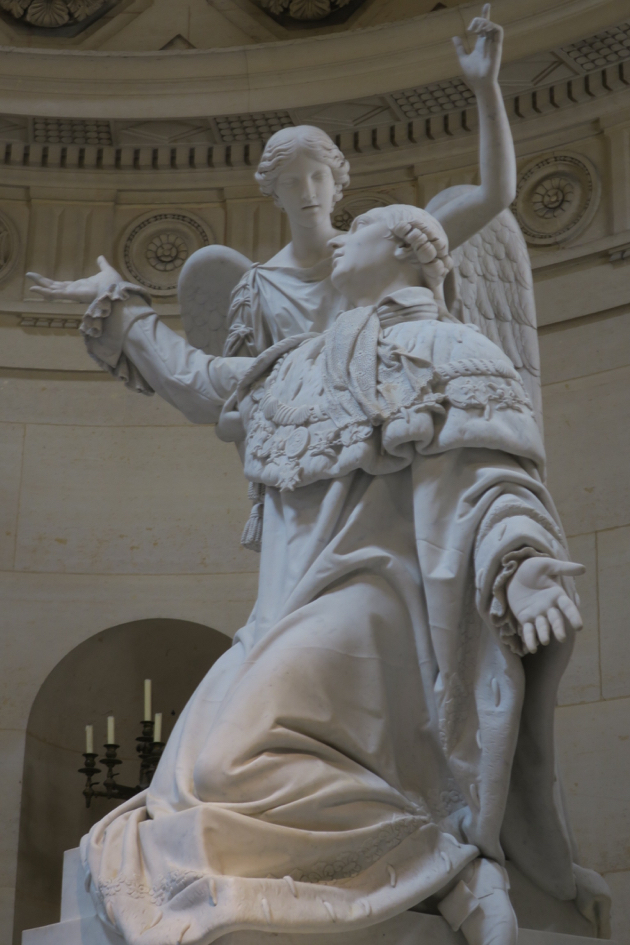
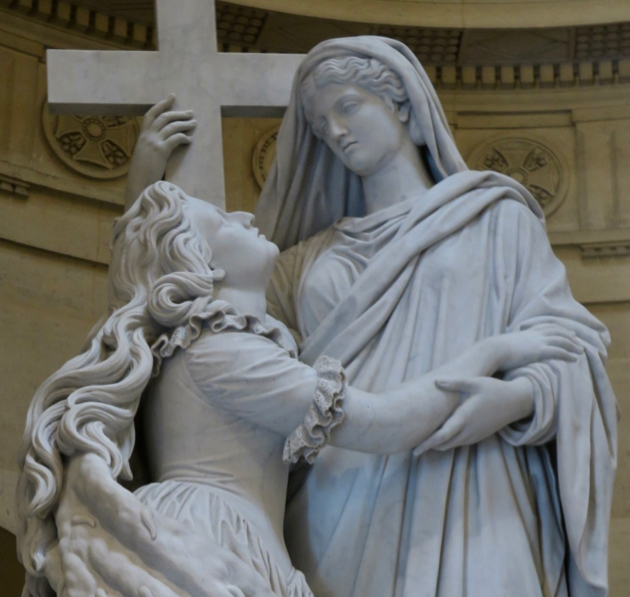
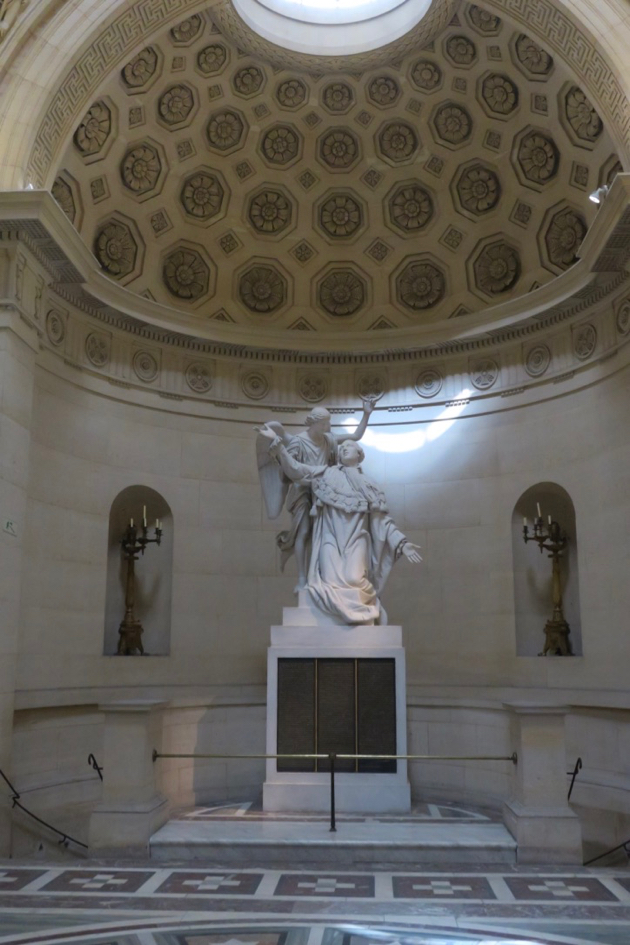
Marie Antoinette was originally scheduled to be guillotined between two prostitutes….
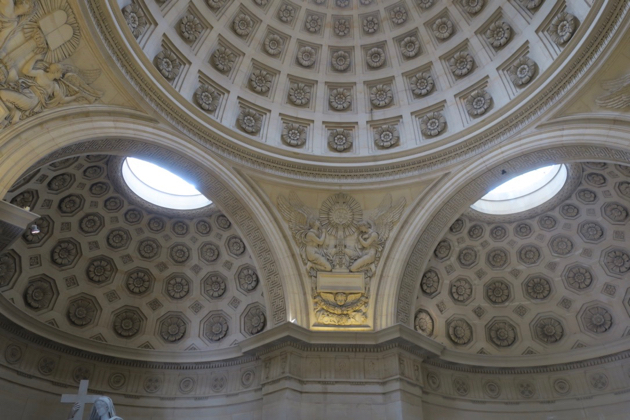
In a dark passage beneath the chapel is a starkly simple altar marking the spot where the royal bodies were found. One thinks of the many other victims dumped in this cemetery whose bodies may not have been exhumed. Returning to the surface, a visitor can explore arched aisles that flank the chapel grounds. These passages, sheltered from the noise of the traffic outside, inspire one to reflect once more on the many early, forgotten victims of the birth of modernity who were or still are interred here.
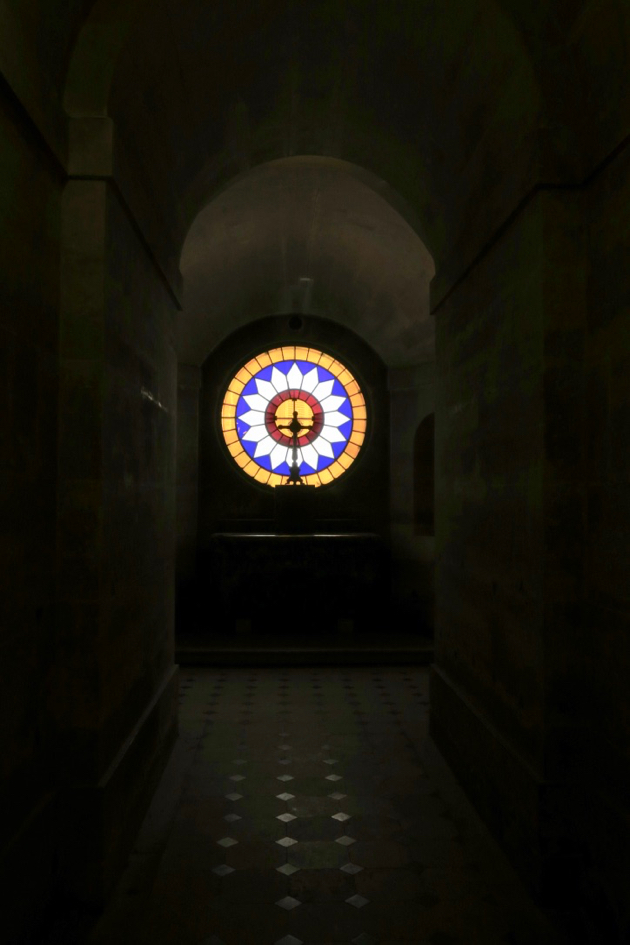
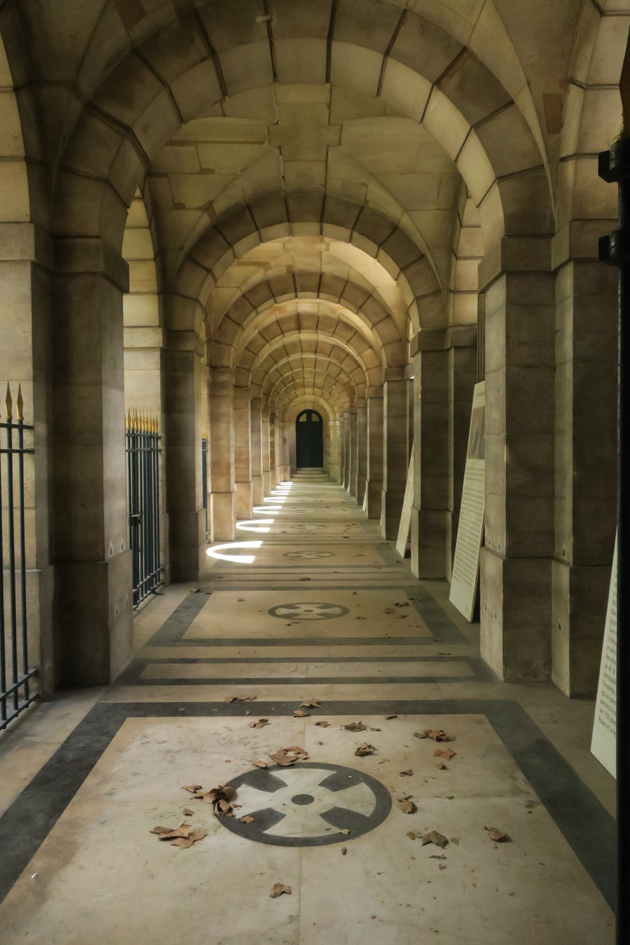

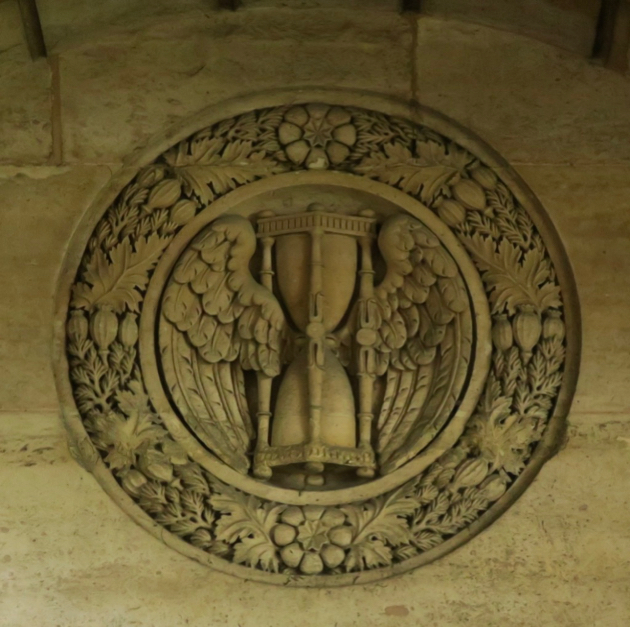
In the 19th century the Chapelle Expiatoire was threatened again and again by revolutionaries, Communards and freemasons. The altar has not been used regularly since the !880’s. By 1914 the ideological threats had abated, and the chapel has survived until our time, if only as a “national monument.” But each year a memorial mass is still celebrated on the day of Louis XVI’s death, January 21.
The Chapelle Notre Dame de Compassion sits in a small park – a kind of traffic island – not too far from Porte Maillot. Near here, in 1842, Prince Ferdinand-Philippe, heir to the French throne, fell out of his coach when the horses reared. He died in a nearby house. It was a catastrophe for the Orleans monarchy, which had been pursuing a dubious “middle way” between Christian monarchy and 19thcentury capitalism.
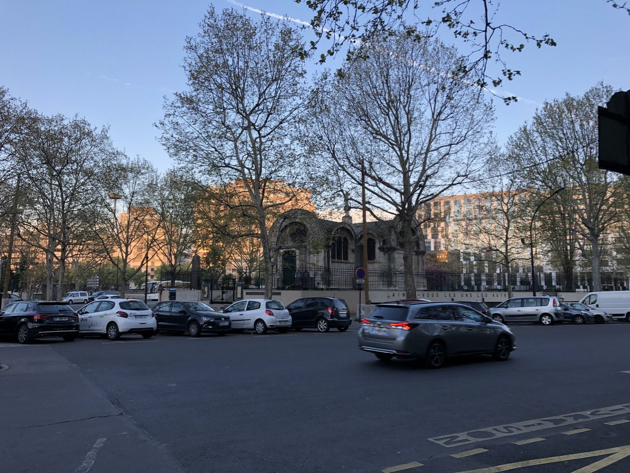
King Louis-Philippe and Queen Marie-Amélie had a chapel constructed on the location of his death. Completed in 1843, it has remained near this site ever since. I say remained, because in the 1970 it was moved, stone-by-stone, a few hundred yards to accommodate the construction of the monstrous Palais des Congres.
The architecture, in a Byzantine style, makes a dark, mysterious impression. Inside, the sombre effect is reinforced by the exposed stonework and the black and white of the floor and altar. Yet this small chapel has some remarkable works of art. A marble sculpture by Triqueti shows Prince Ferdinand-Philippe at the moment of death. Above is a praying angel, sculpted by Ferdinand-Philippe’s sister, Marie d’Orléans, one of the first female sculptors in Europe. Triqueti also created the expressive Pieta above the altar with the features of the prince and his mother.
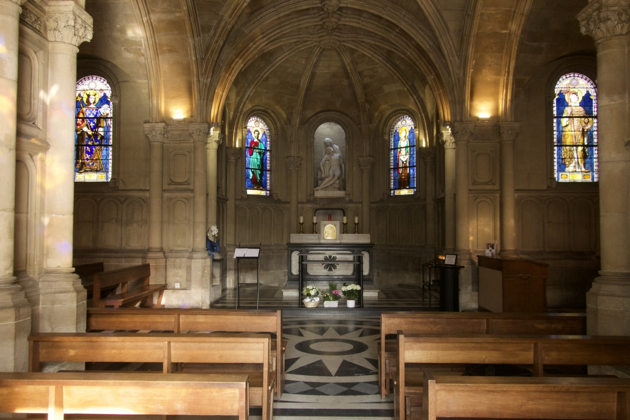
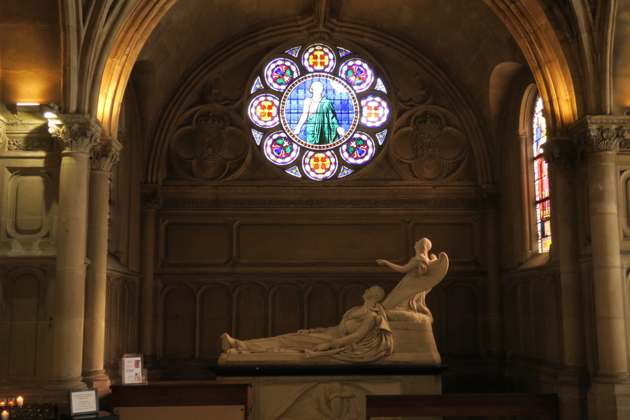
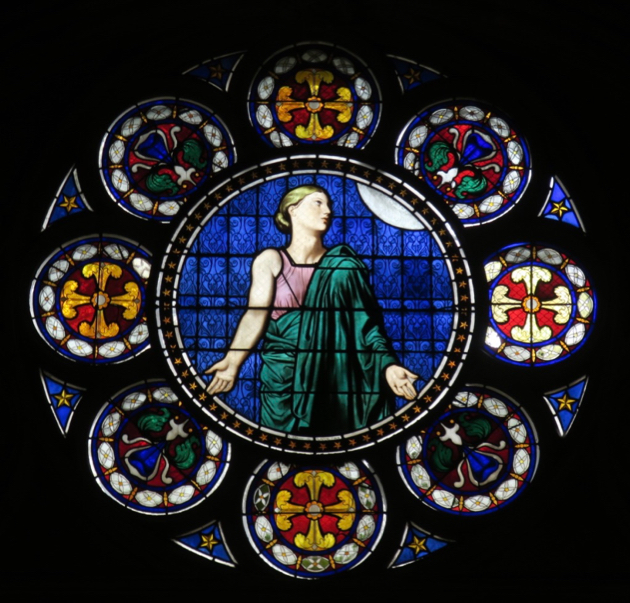
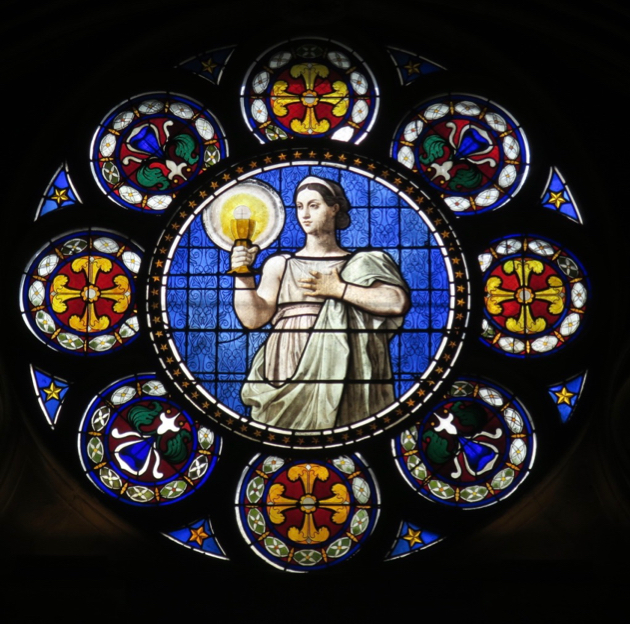
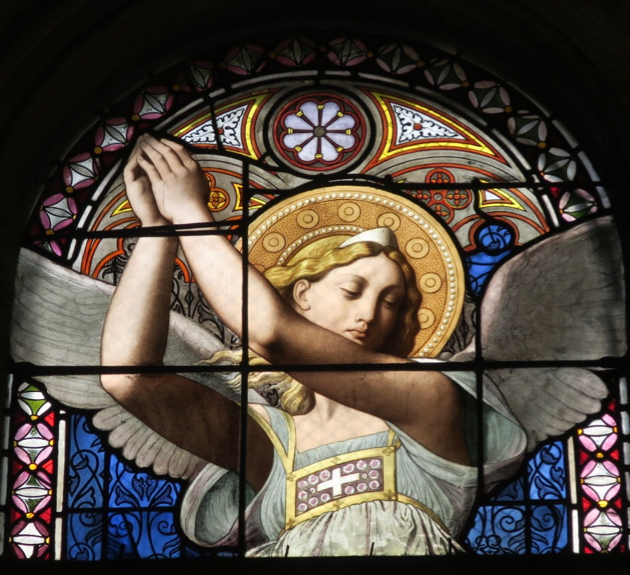

But the chapel’s real treasure is the set of the stained-glass windows, made to the designs of Ingres. They depict the theological virtues and saints associated with the reigning French royal family. The obscure interior displays them to great advantage. Close inspection reveals that St. Philip has the features of Louis-Philippe, Saint Amalia those of the Queen and that St. Ferdinand is a portrait of the defunct prince. Perhaps we look askance such practices nowadays! But Ingres – a partisan of King Louis-Philippe – left here a remarkable achievement in a medium not normally associated with his neoclassical style. And the chapel itself, combining in its architecture and decoration Byzantine, neoclassical, Romanesque and realistic elements is a remarkable artistic success.
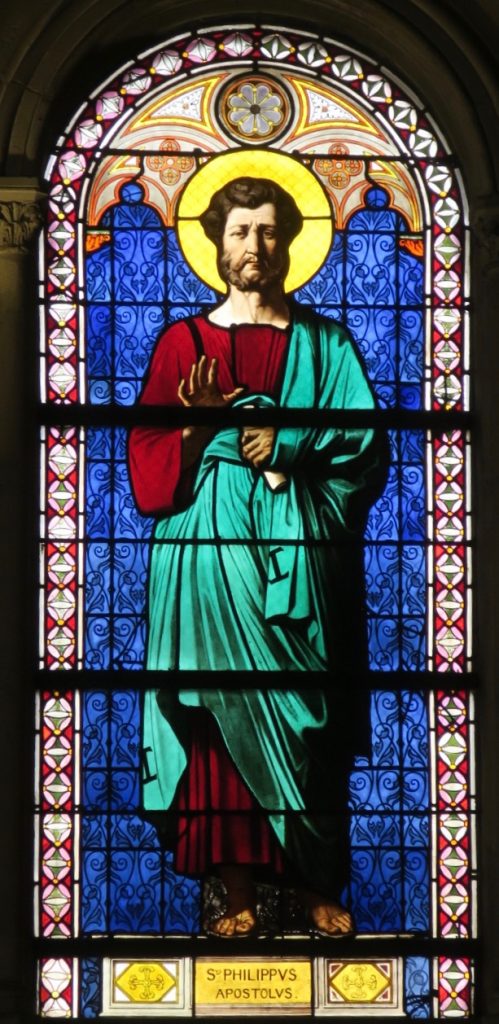
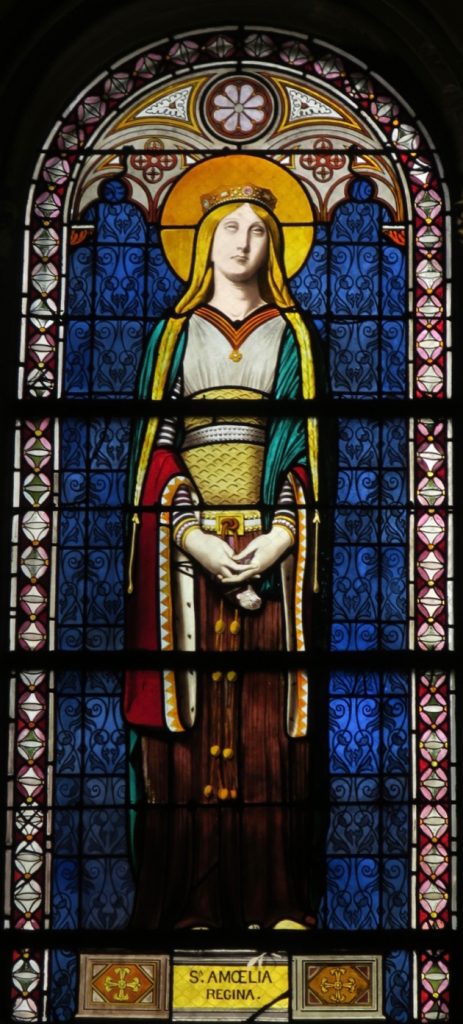
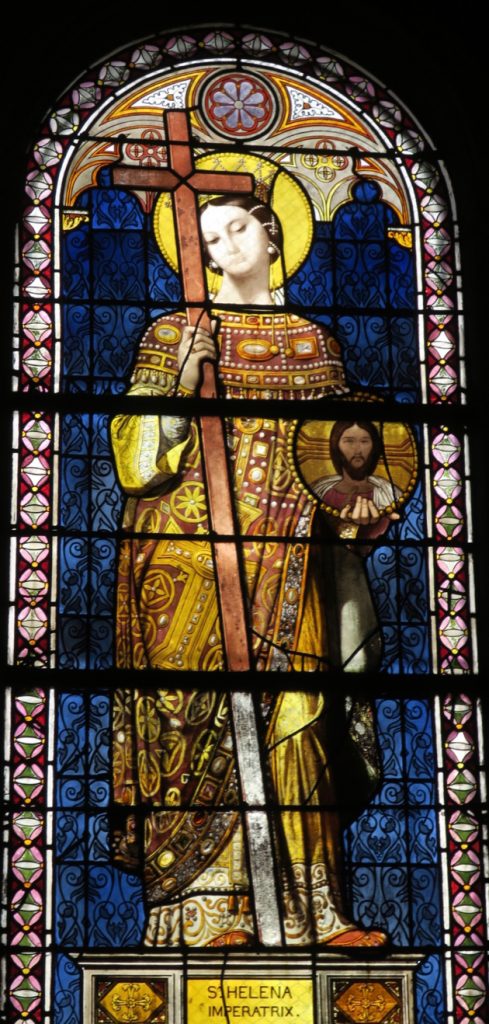
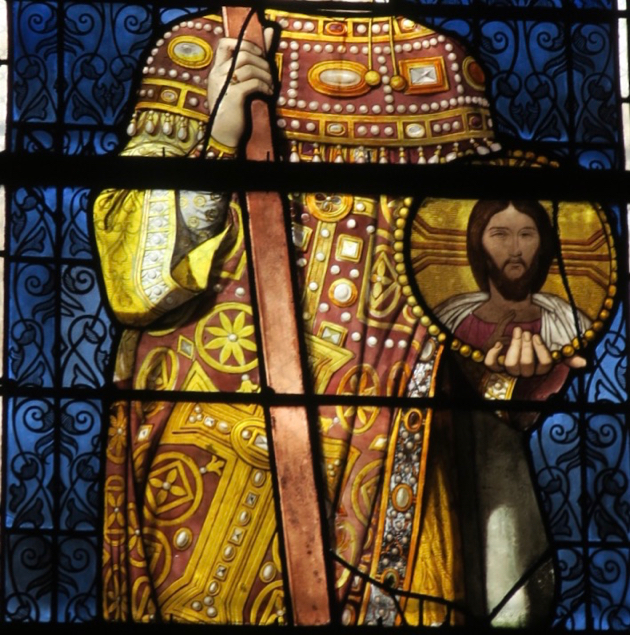
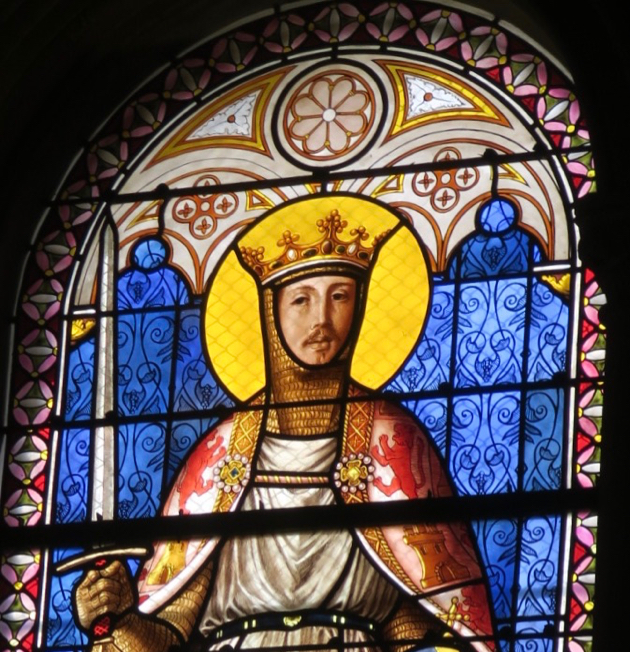
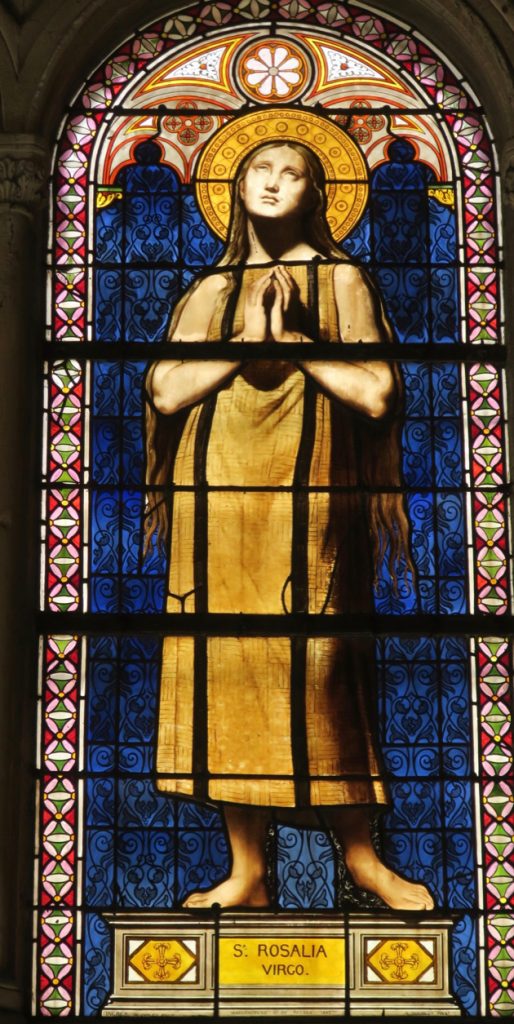
In contrast to the Chapelle Expiatoire, Notre Dame de Compassion remains an active church; indeed, in 1993 it was elevated to a parish. There are usually one or two women at prayer; fresh flowers are placed before the altar. Are they a legacy from the dwindling ranks of the French monarchists? Or is this silent, obscure interior – commemorating a tragedy of so many years ago – especially conducive to prayer by those beset by the sorrows of a deaf and unforgiving world?
The Chapelle Notre Dame de Consolation, located a couple of blocks from the heart of the luxury shopping district of Paris, is the memorial of a horrific tragedy in 1897. The Bazar de la Charité was an annual fundraising event sponsored by Catholic aristocrats. In 1897, the lavish pavilion featured a recent invention: a movie projector. But, powered by very flammable oil, it exploded when the fair was full of visitors. Within minutes the bazaar was a mass of flame. Women ran out with their elaborate hats of the fashion of that day aflame; others were burned alive or trampled to death in the crush. When it was over some 126 people – mostly Catholic, mostly women and children, were dead. This tragedy left its mark in the literature of the time: Joris-Karl Huysmans and Leon Bloy – the latter in a singularly unpleasant commentary – make reference to it. Now and then it returns to the public eye. The New York Times wrote about it some ten years ago and a French television channel is supposed to air a presentation on the Bazar de la Charité this year.
The families of the victims purchased the fairgrounds where the tragedy occurred and funded the construction of the chapel, completed in 1900. It is a lavish affair, reproducing in Paris a 17thcentury Roman baroque church. The interior overflows with marble and statuary, gleaming metalwork and paintings. Above, in the cupola, the Virgin points out to the victims the path leading to Paradise.
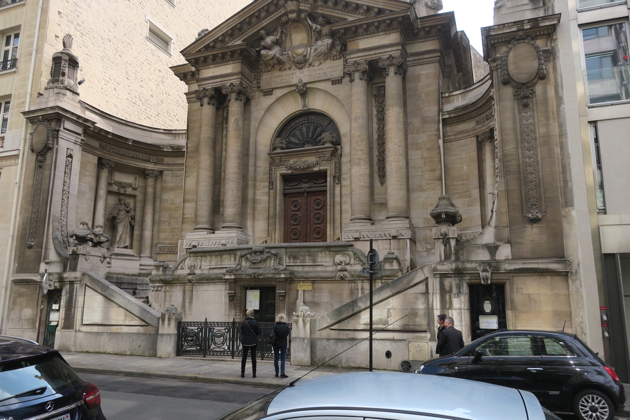
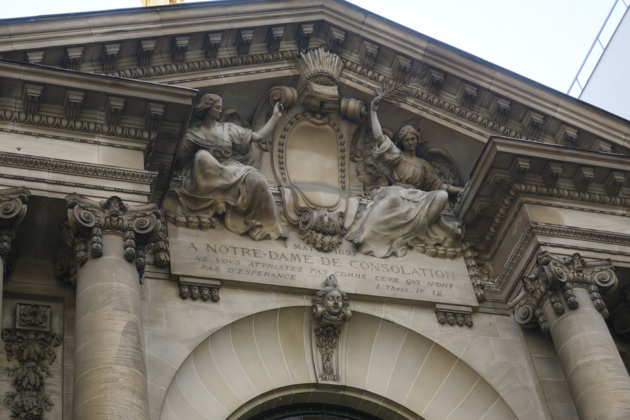
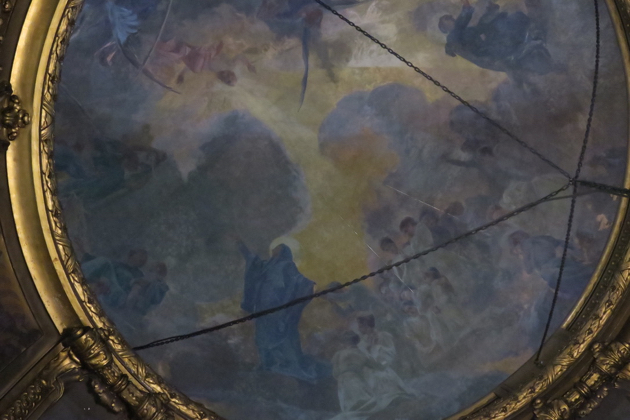
At the rear of the church is a “cloister” with beautiful silver stations of the cross. Set among the solemn halls are sculptures and cenotaphs commemorating the dead. A marble copy of a famous image of the dead Christ in Naples was donated by an American woman who had escaped the flames. An elegant cenotaph honors the memory of the most prominent victim: Sophie Charlotte of Bavaria, the Duchesse D’ Alencon. She was the sister of the famous Sissi – the wife of Emperor Franz Joseph – and herself once had been betrothed to King Ludwig II of Bavaria. The most poignant memorial, however, is a case holding personal items rescued from the inferno: rosaries and prayer books belonging to the victims as well as two charred dolls….
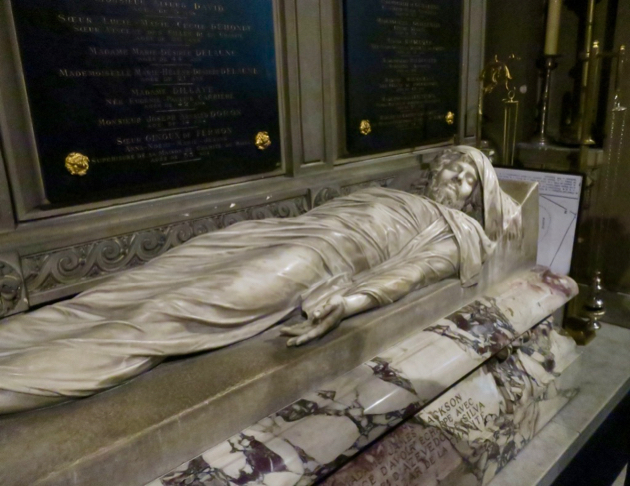
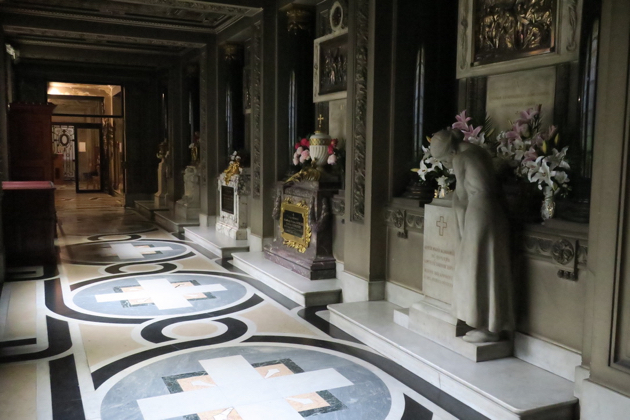
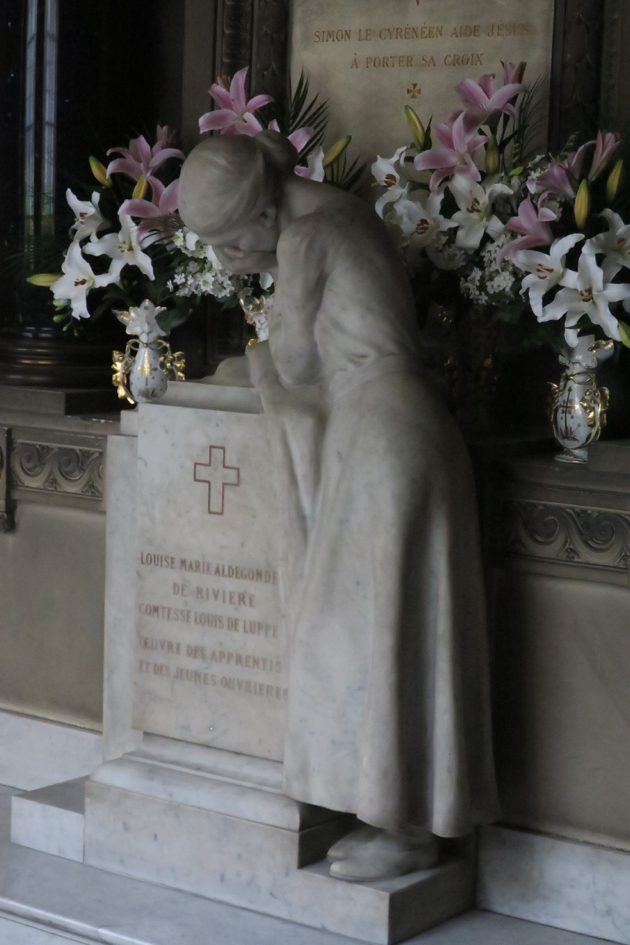
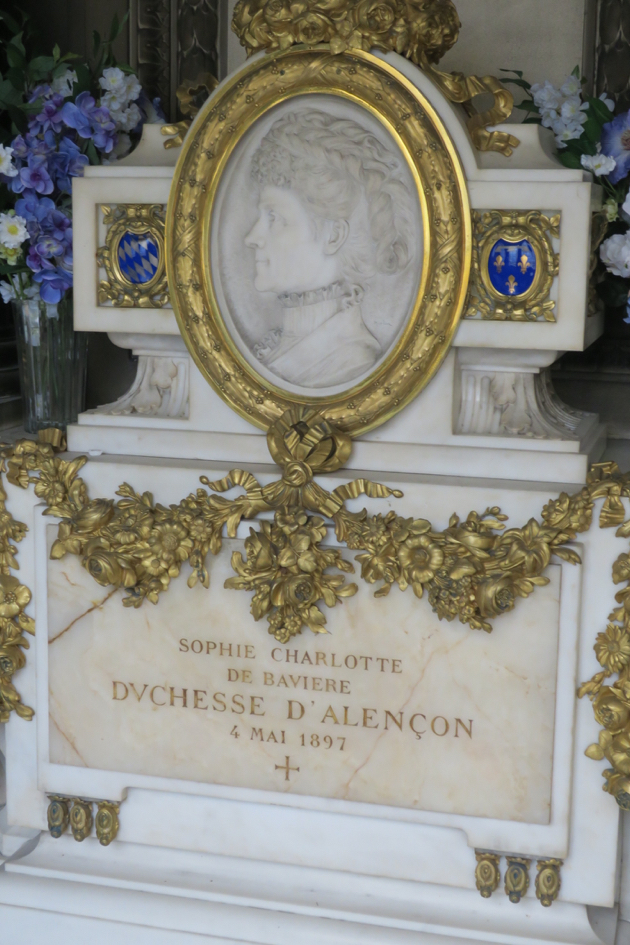
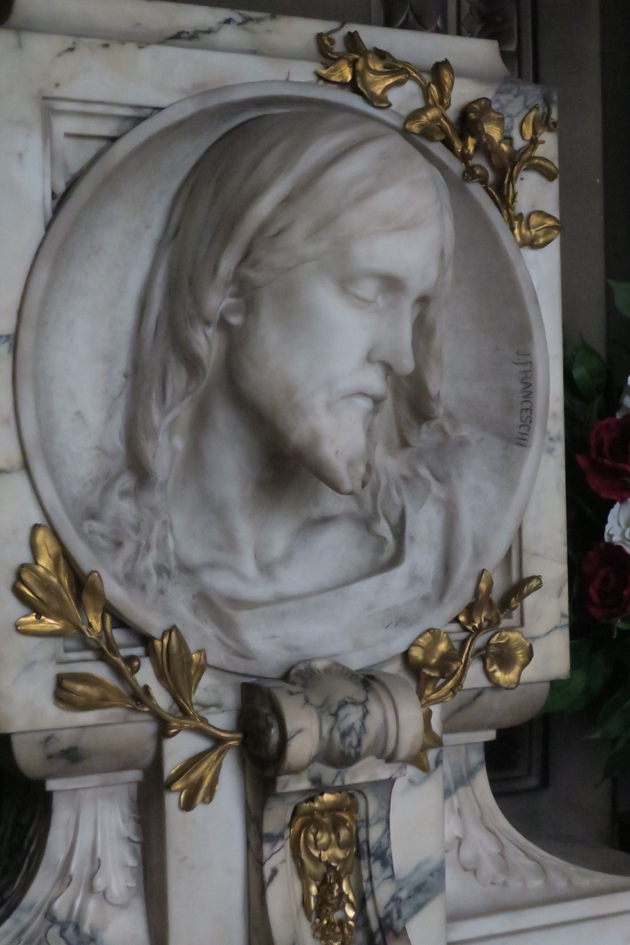
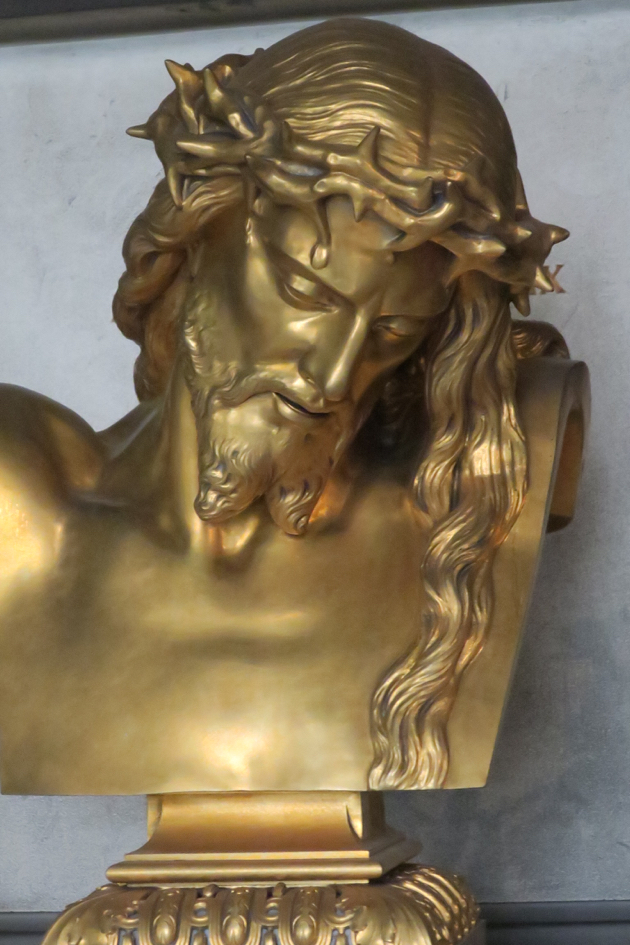
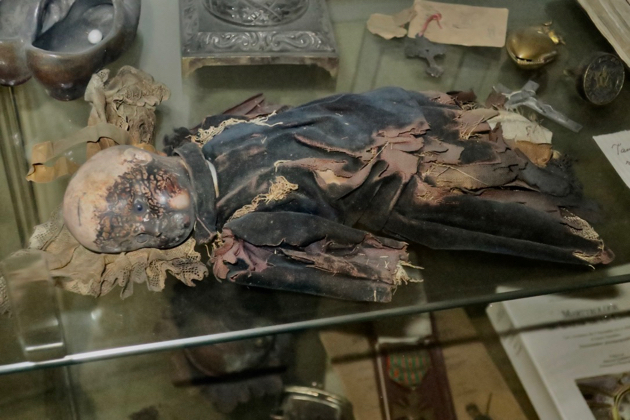
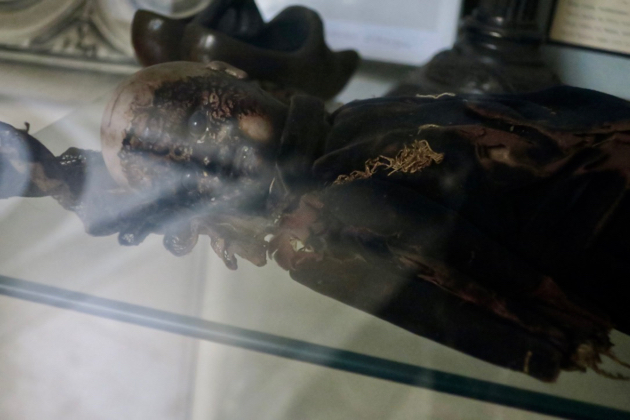
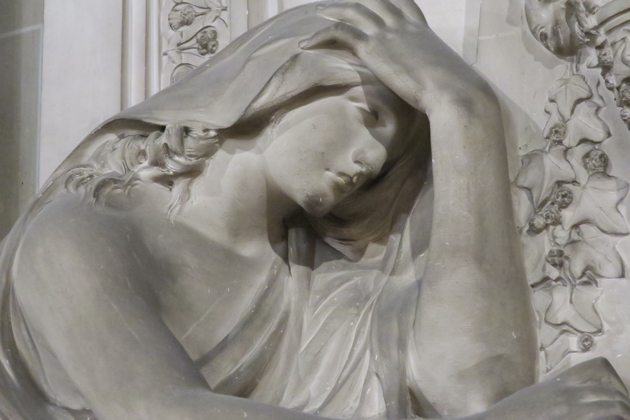
Despite all the splendor, Notre Dame de Consolation is a somber memorial, quiet and mysterious. Yet it is also full of life. Because the chapel still belongs to the association of the descendants of the victims, it is outside the jurisdiction at the Archdiocese of Paris. Not long ago the association entrusted the chapel to the FSSPX. At mass times the chapel is full again. indeed, Notre Dame de Consolation today boasts an amenity not commonly needed in the Catholic churches of France: a cry-room! So, this domain of the dead has returned to full life, both liturgically and physically. I am sure the victims of that long-ago disaster are pleased!
3 Apr
2019
Laetare Sunday at St. Agnes Church, New York.
Photo courtesy of Diana Calvario.
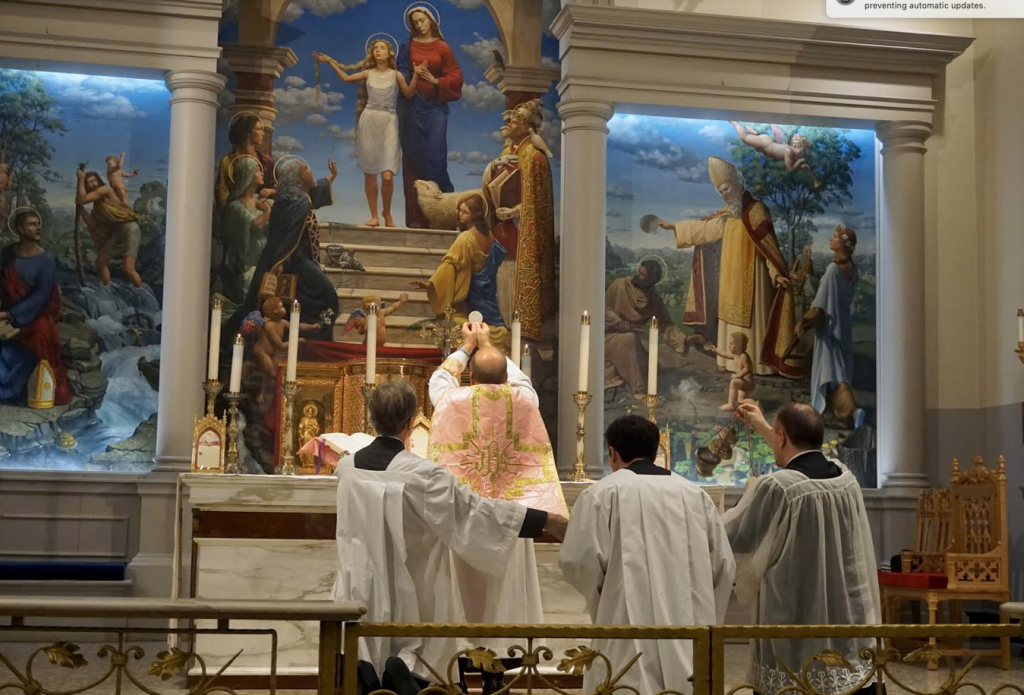
5 Feb
2019
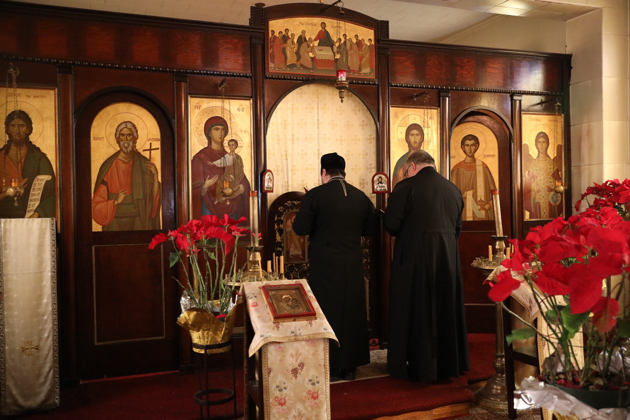
The final liturgy at St. Michael’s….
St. Michael’s Russian Catholic chapel is unusual among the churches we have covered in this series. It is distinctive neither in its architecture nor its furnishings – a smallish room on the ground floor of a 19th century administrative building. The decoration was pretty if simple – an iconostasis, candle stands, and a rich collection of icons displayed everywhere. Certainly, the size of the congregation was insignificant even by the standard of present-day New York parishes. Yet St. Michael’s was above all one thing – a liturgy, that it conscientiously celebrated from more than 80 years.
Fr. Andrew Rogosh arrived in 1935 to care for the tiny community of Russian Catholics. St Michael’s commenced life the following year. Since then, the parish has seen ups and downs, and a changing congregation. Even though more Russians arrived after the Second World War by the 1980’s there was hardly a Russian native left. Yet a new set of parishioners took their place. The congregation consisted mainly of those less fortunate than most in the material things of this world – the average parishioner at St Ignatius Loyola or Resurrection in Rye did not come here. Then, in the 1990’s there was a new influx from Russia after the collapse of the Soviet Union. That wave in turn dissipated. The last liturgy at St Michael’s, however, was attended by a congregation more youthful, on the average, than I had ever seen there before.
But through all these vicissitudes, St Michael’s treasure was the Eastern liturgy, celebrated precisely and exactly, with all the embellishments this small and meagre parish could afford; a model for Catholics and Orthodox alike. Anyone who has attended St. Michael’s Easter service – the candlelight procession through St Patrick’s graveyard, the joyous cries of “Christ is risen!”, the three- and one-half hours service, the concluding festive banquet after 2:30 – does not easily forget it. St. Michael’s was always welcoming, remaining open to visitors and the curious – unlike the strong ethnic focus of most Orthodox and Eastern Catholic parishes. Many hierarchs and noteworthy people attended St Michaels over the years:
St. Michael’s chapel down on Mulberry Street, in back of old St. Patrick’s Cathedral which is surrounded by a beautiful green church yard, with a cemetery filled with trees and shrubs. Toussaint Saint L’Overture, the Negro liberator, is supposed to be buried there. Also there are catacombs, so I’ve heard tell, beneath the church. When one goes to assist at the liturgy of St. John Chrysostom, and listen to the superb Russian choir, one feels that here is prayer for Russia indeed.
(Dorothy Day, The Catholic Worker, July-August 1947, 1)
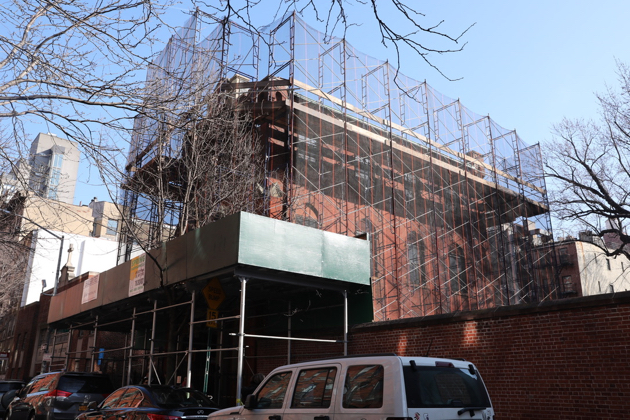
And, on occasion, St Michael’s seems to have extended its liturgical mission outside the boundaries of its small chapel:
The first Byzantine‐Rumanian Rite mass to be celebrated at St. Patrick’s Cathedral since 1947 was sung there yesterday to mark the suppression of the Rumanian Catholic Church by the Communists.
During the celebration the Rev. Andrew Rogosh of the Catholic Near East Welfare Association was installed as Protopresbyter, a title conferred on him by Pope Paul VI. He is the only Catholic priest in the United States to hold this office.
Several thousand worshipers gathered in the cathedral to hear the liturgy of the Byzantine Rite, which was unfamiliar to many of them. (“Byzantine Mass sung at St. Patrick’s,” The New York Times, March 15, 1964)
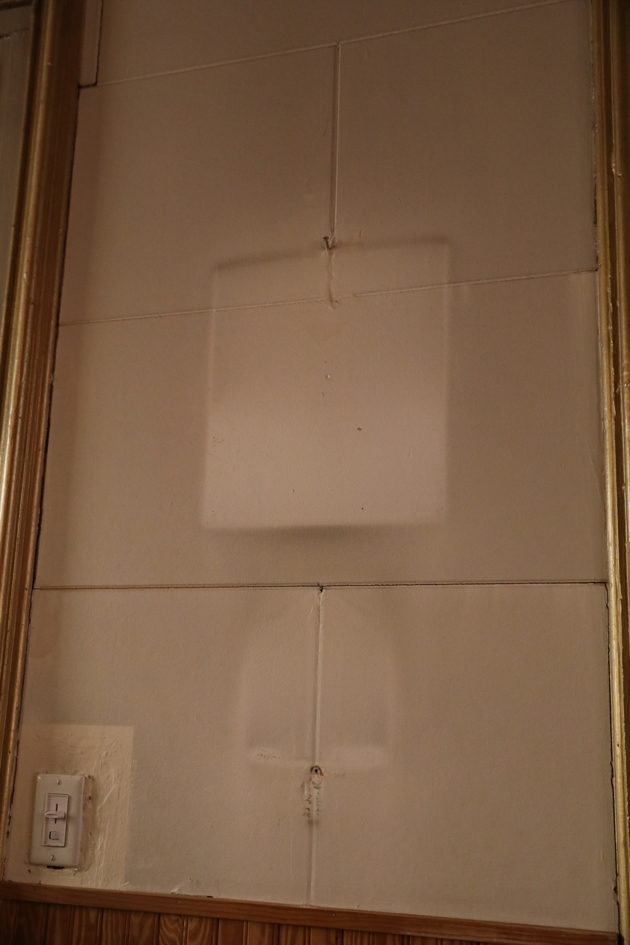
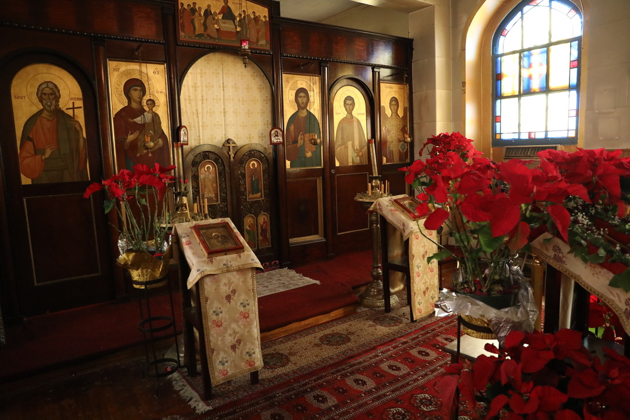
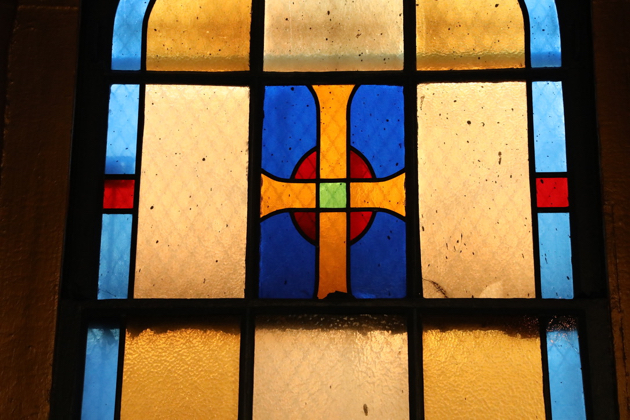
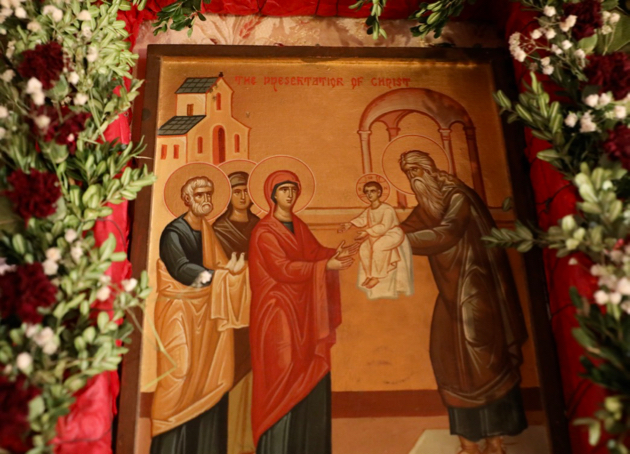
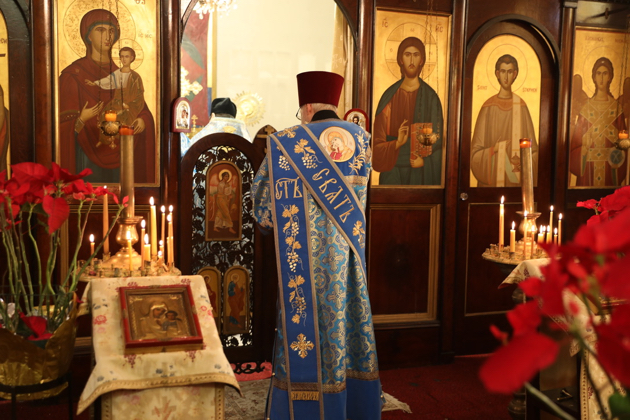
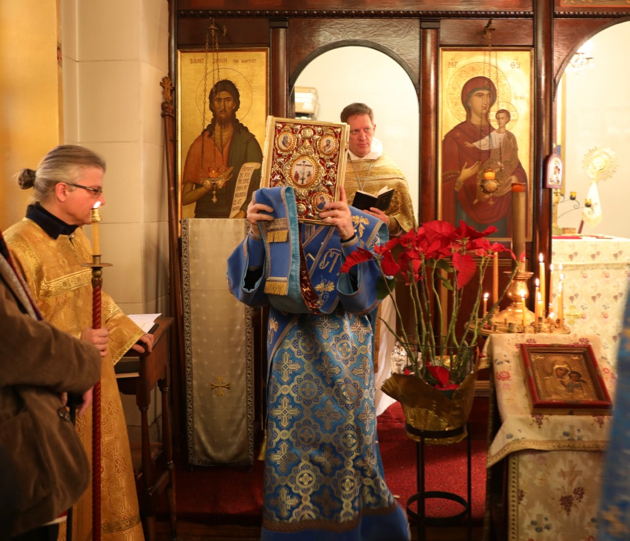
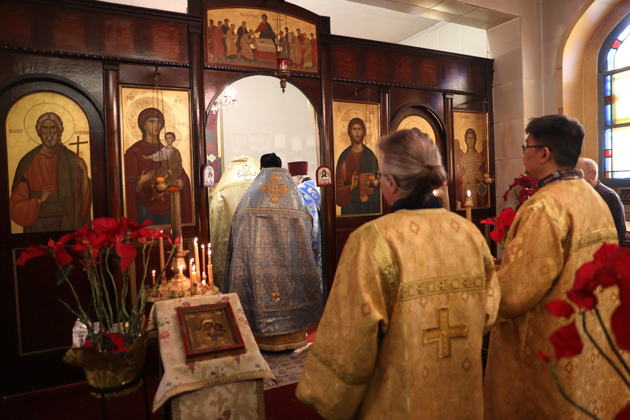
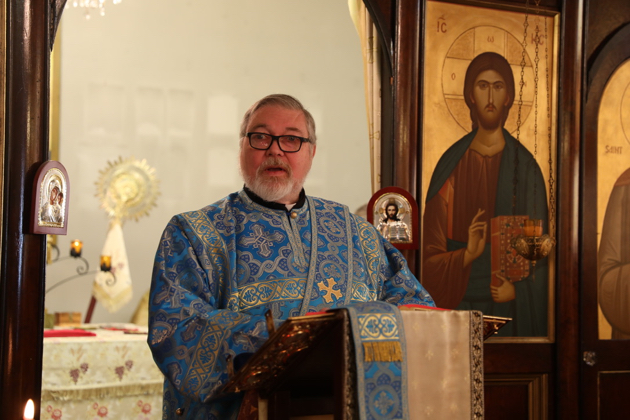
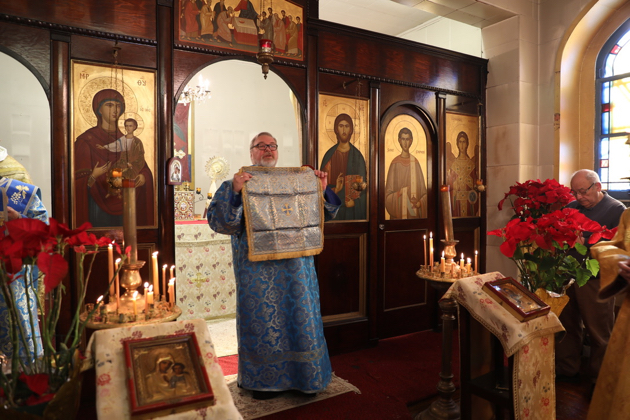
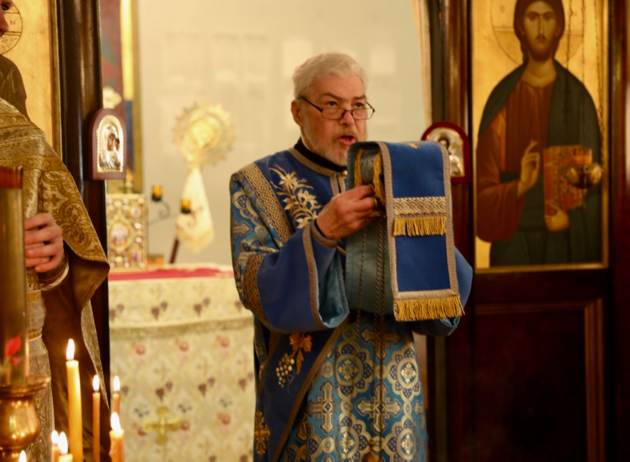

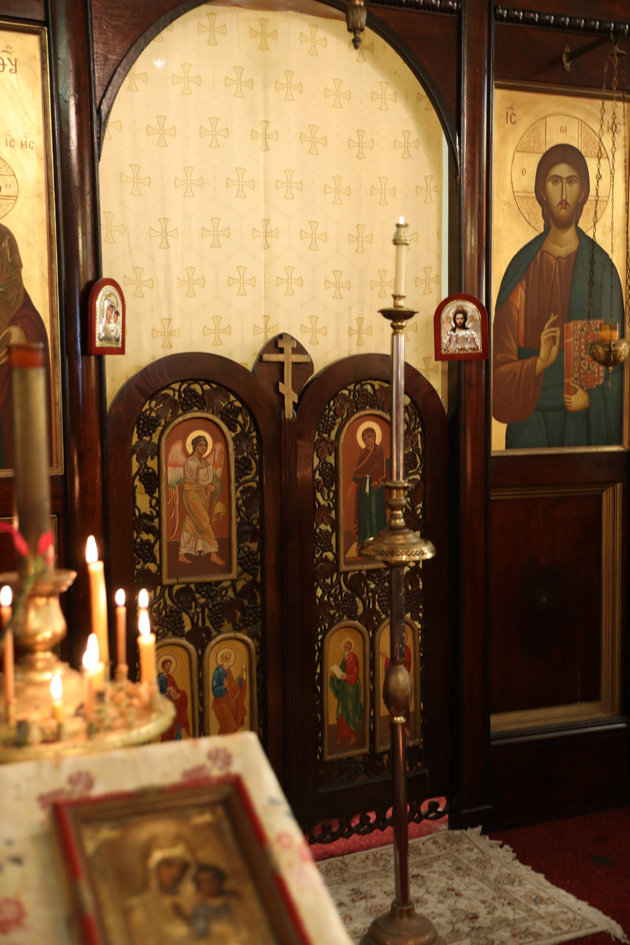

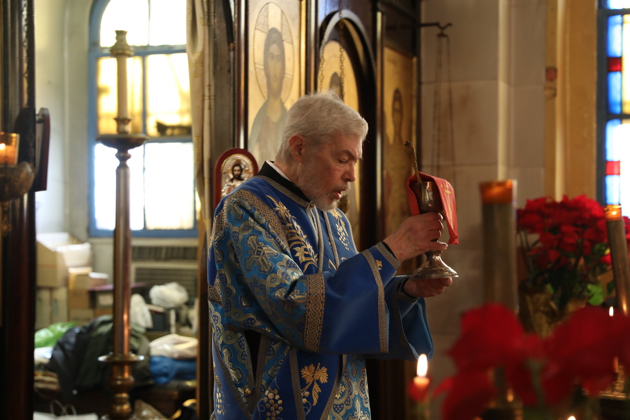
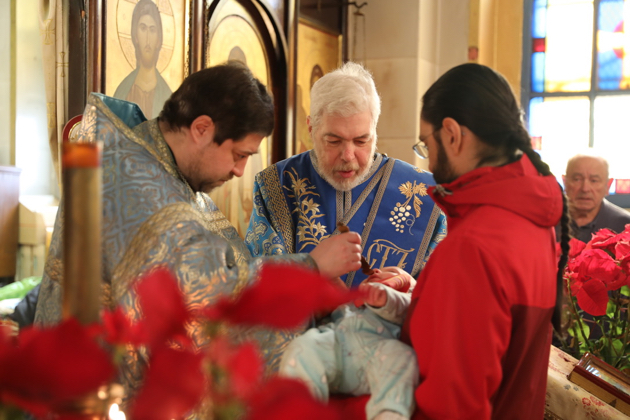
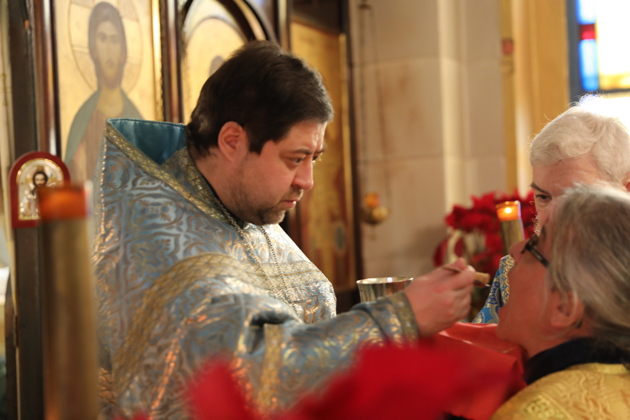
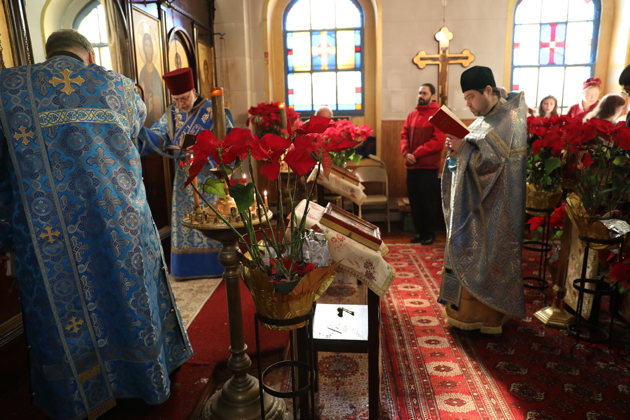

But it is precisely this missionary, or, to use current terminology, “evangelical” spirit that seems to have deserted the Catholic Church of the present day. The neighborhood of St Michaels was in 1982 still a desolate, out of the way corner of New York – it now swarms with boutiques and restaurants line the Bowery. A small parish that survived through decades of obscurity and poverty has fallen victim to the property values prosperity brings. It is a story often repeated in the last two decades in the New York Archdiocese.
Thanks to the generosity of the Dominicans, the community of St Michael’s will be relocating to St Catherine of Siena parish. It will be quite a change – moving from a small one-room chapel to one of the grandest churches on Manhattan Island! The liturgy will be at the main altar at 11:30 on Sundays. We would hope that the mission of St Michael’s will continue in such unfamiliar surroundings. And, who knows – perhaps now, when it will be open to the gaze of a much larger congregation, the liturgy that the small chapel of St Michael’s cared for so many decades will find a new and larger congregation.
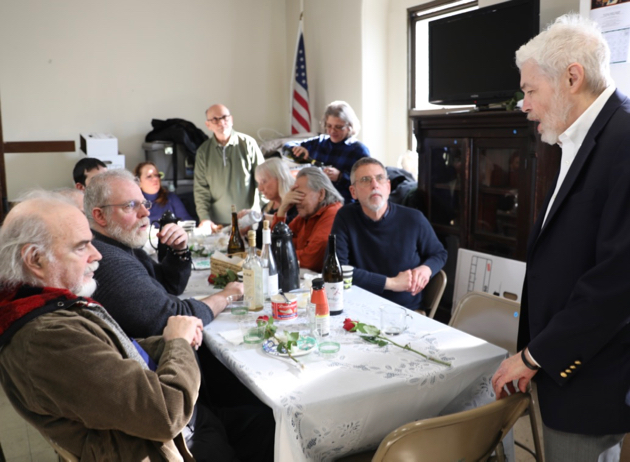
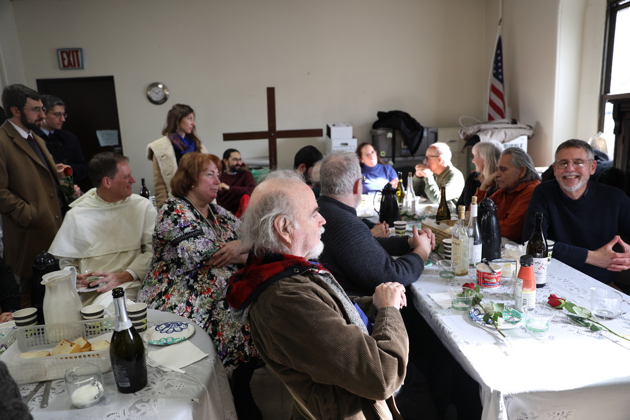
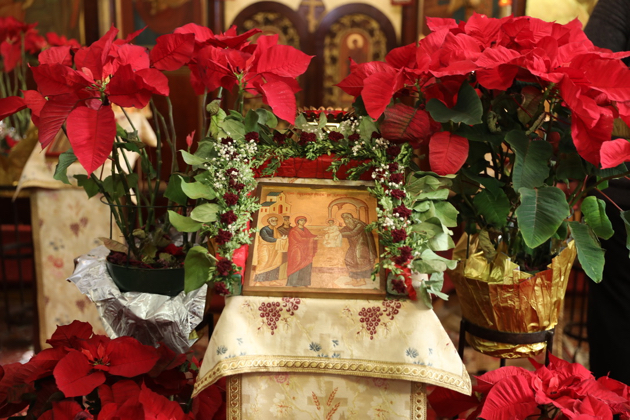
1 Jan
2019
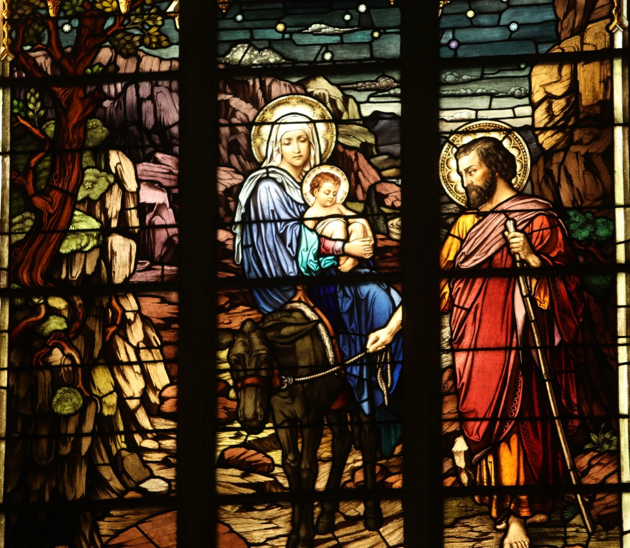
Mass for the Feast of the Circumcision of Our Lord at the Church of Sts. Cyril and Methodius, Bridgeport CT – now in the care of the Institute of Christ the King, Sovereign Priest.

